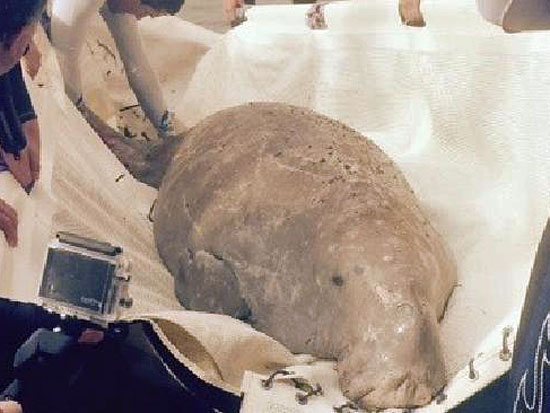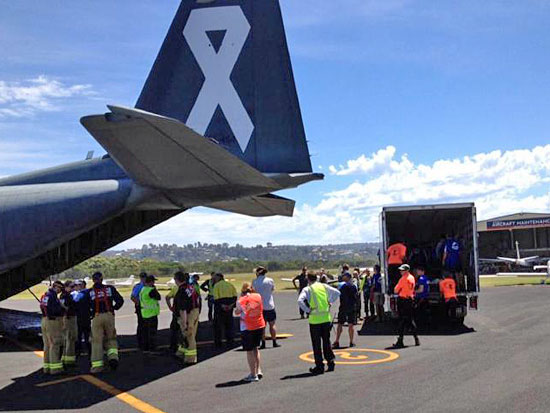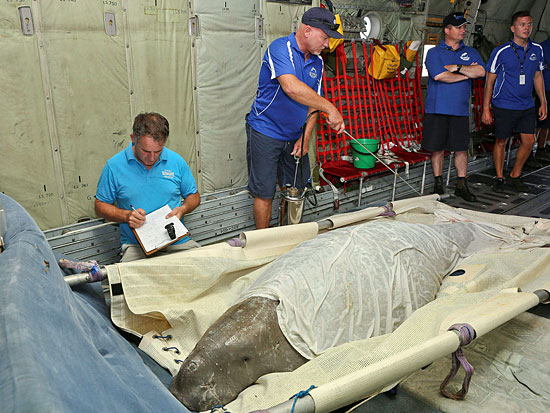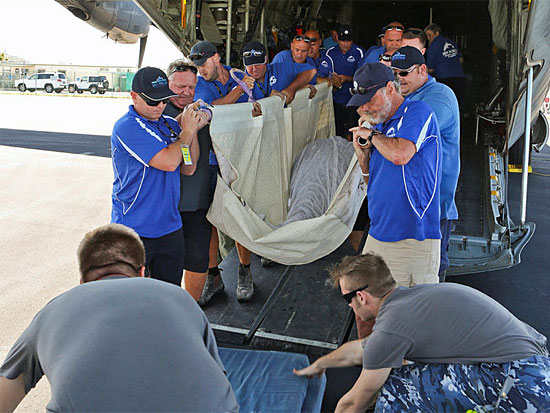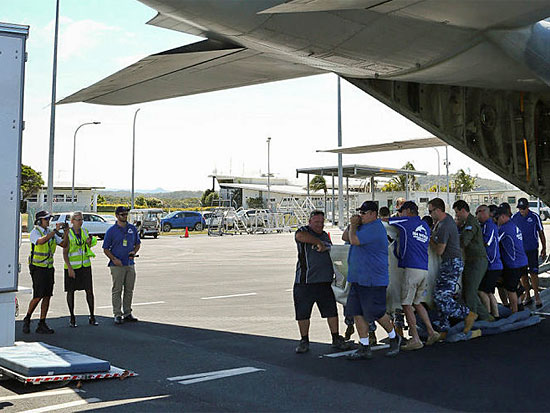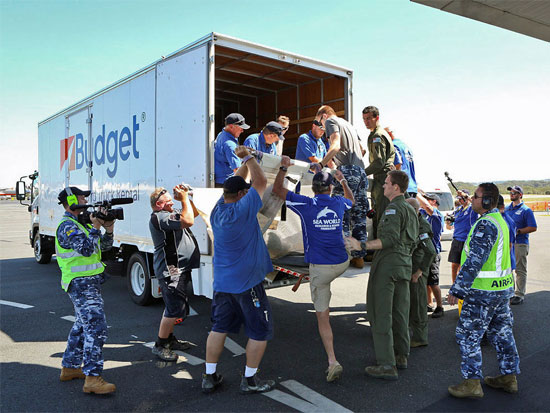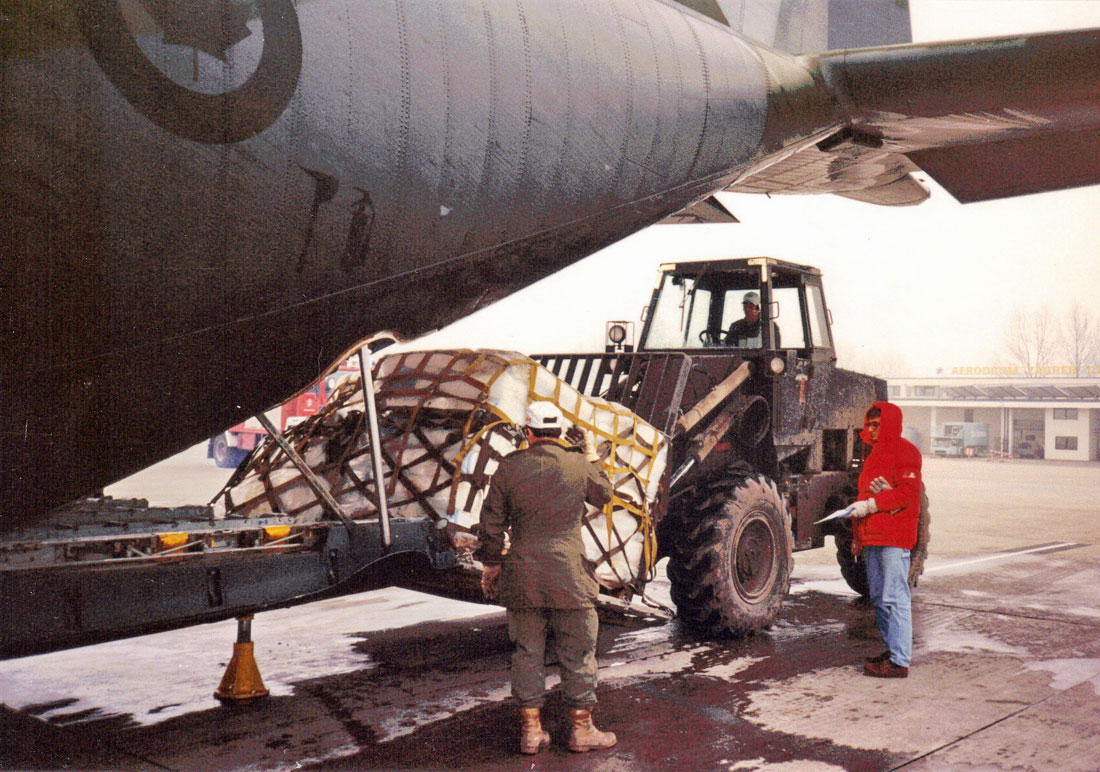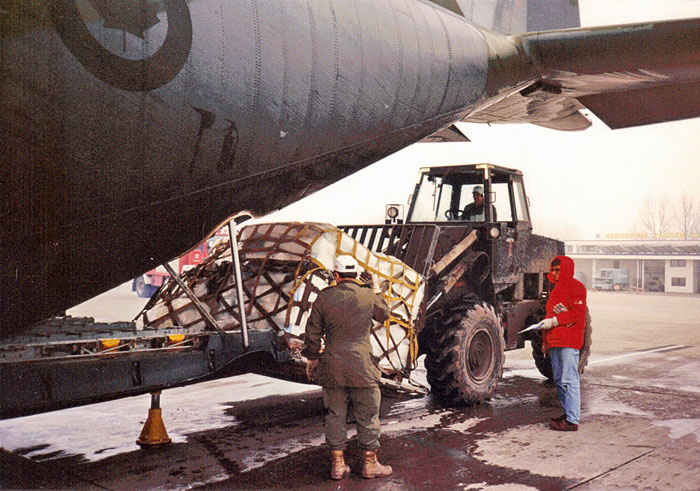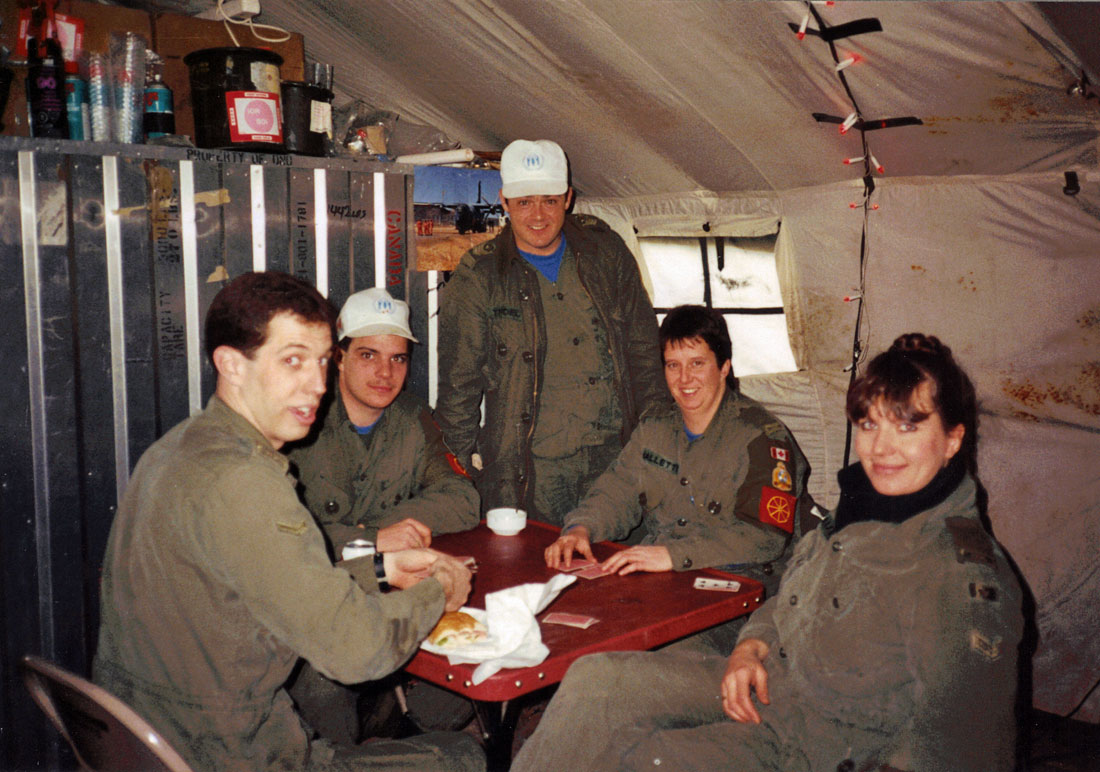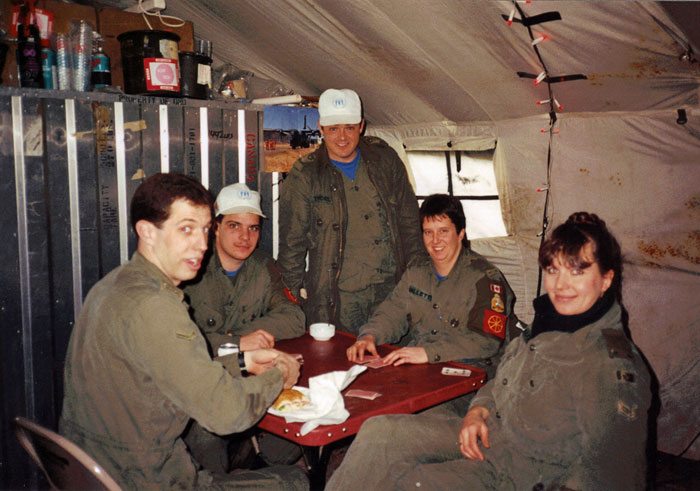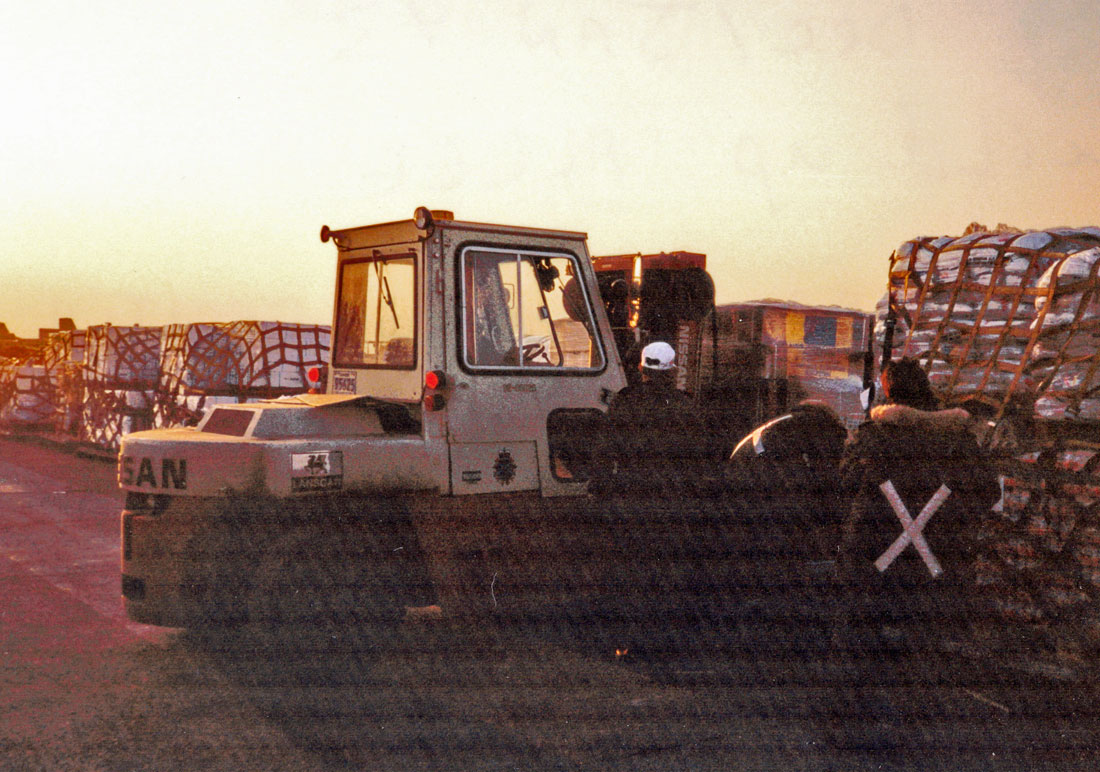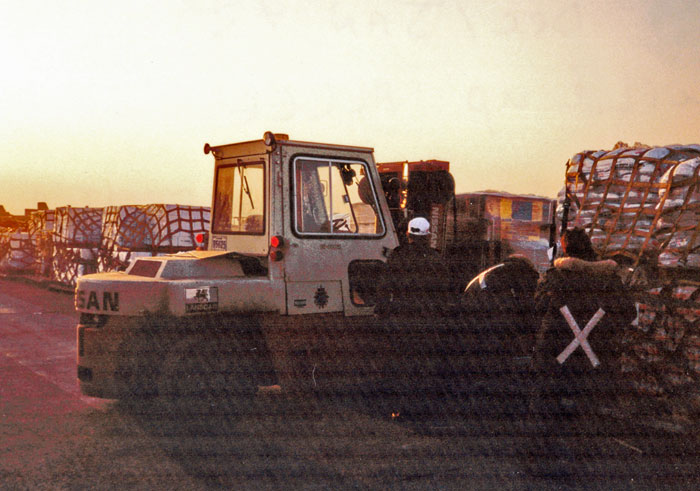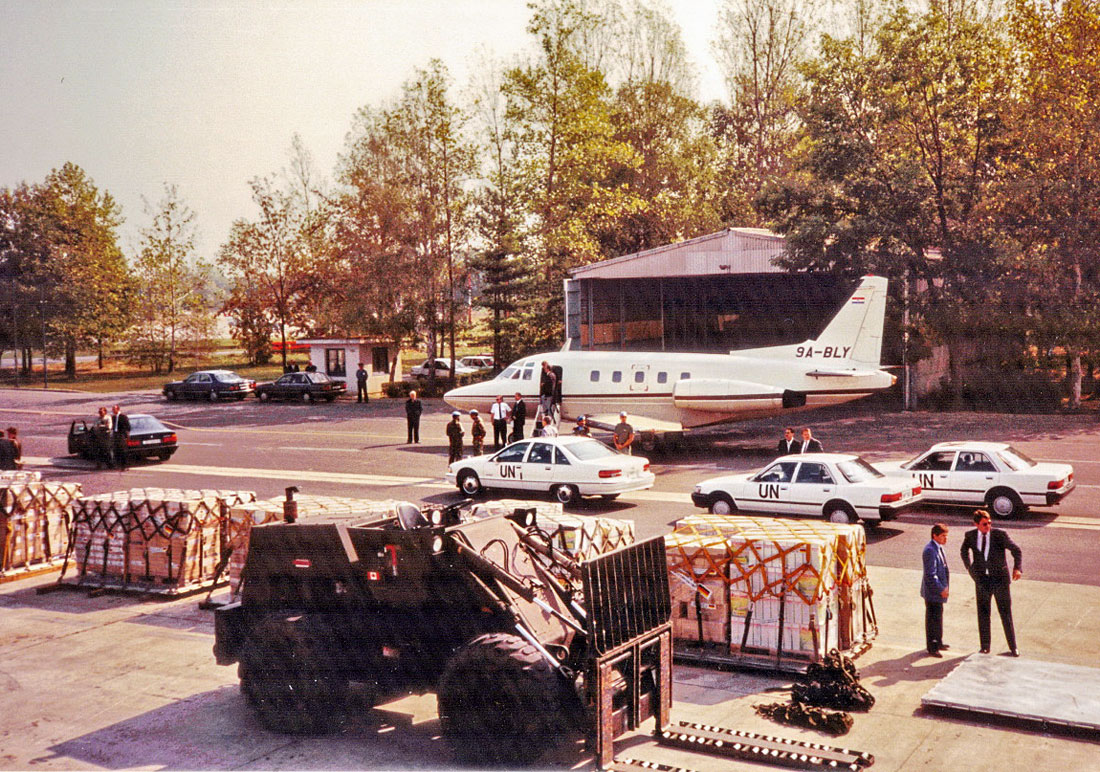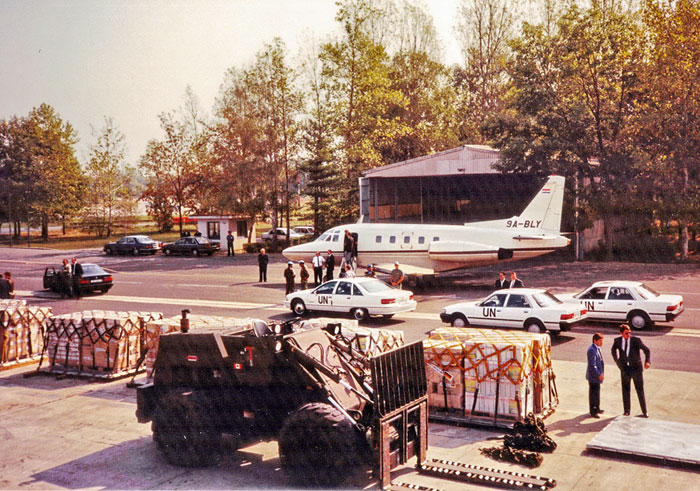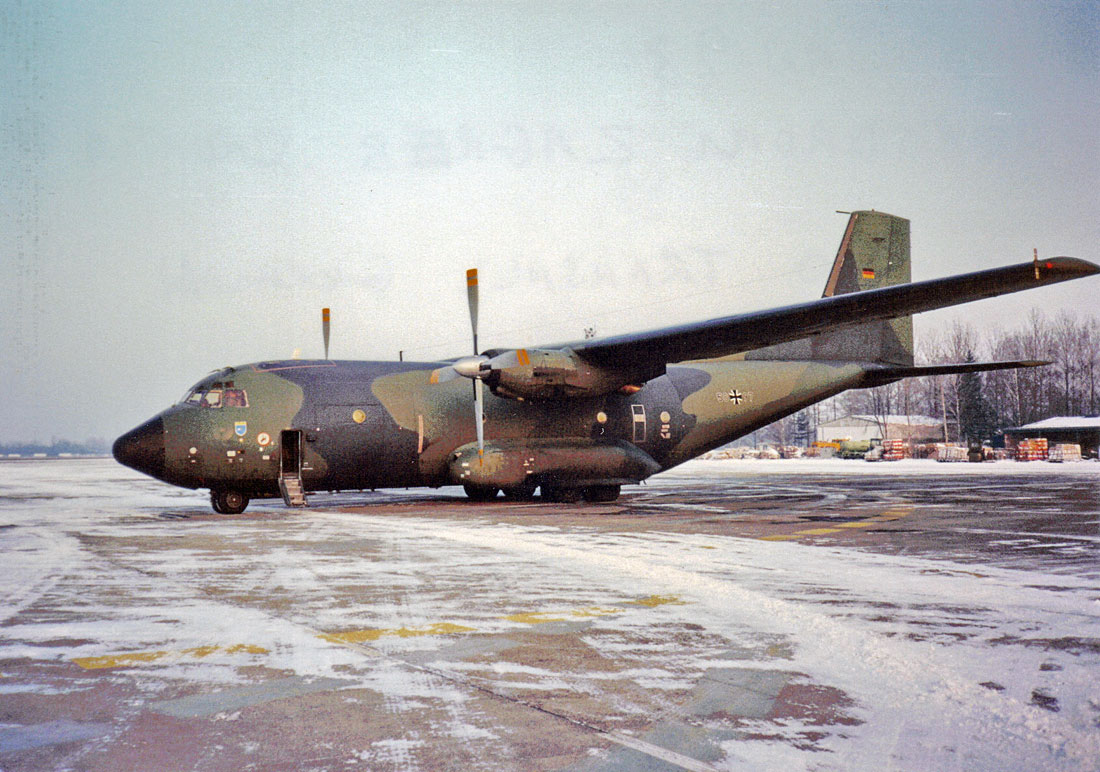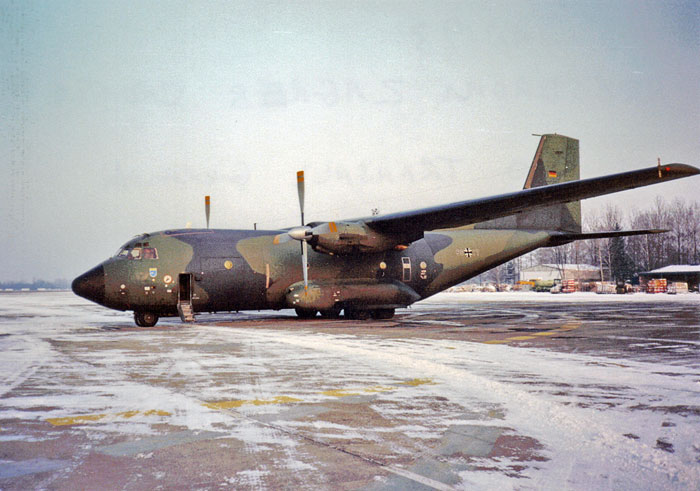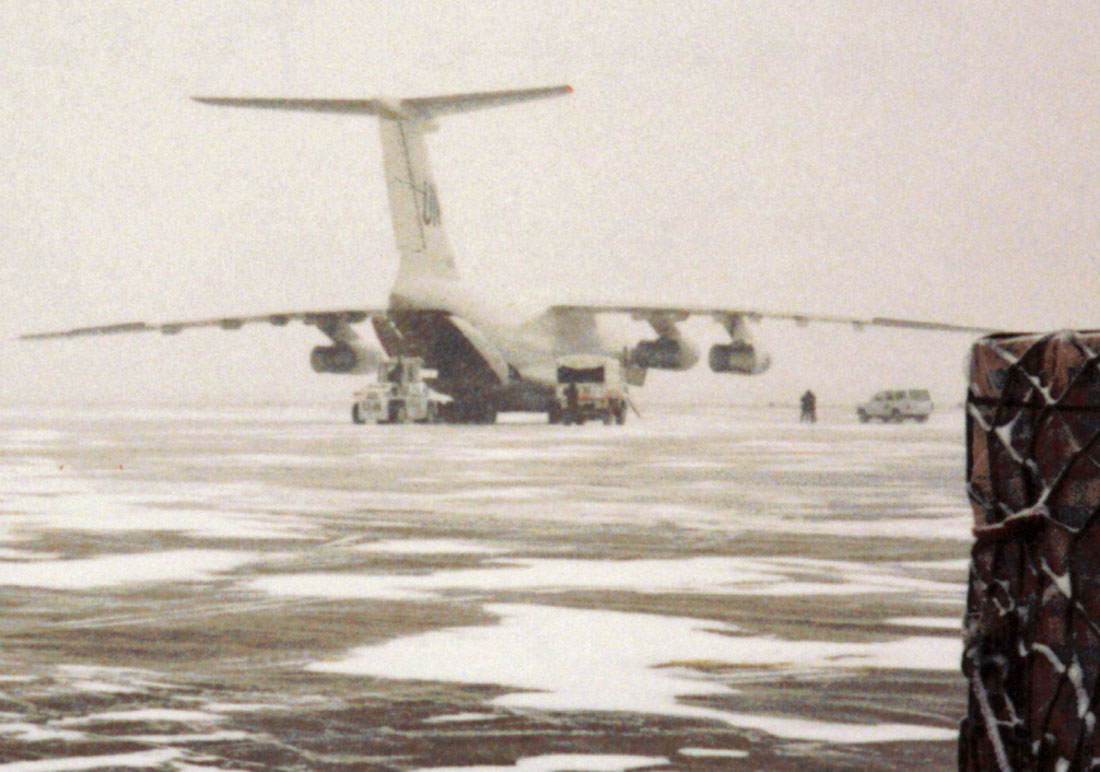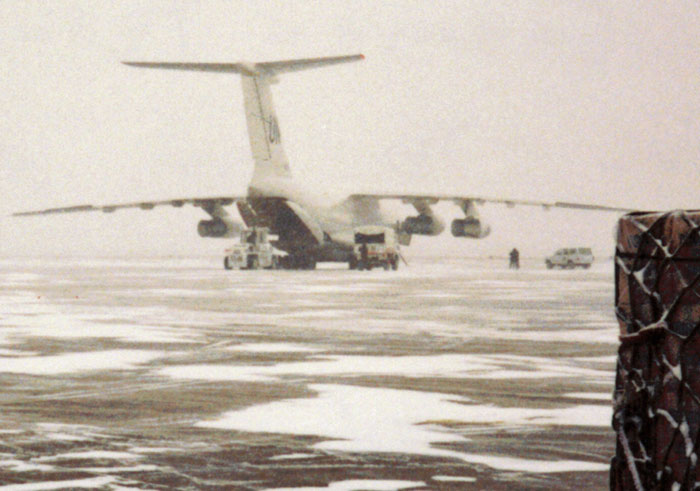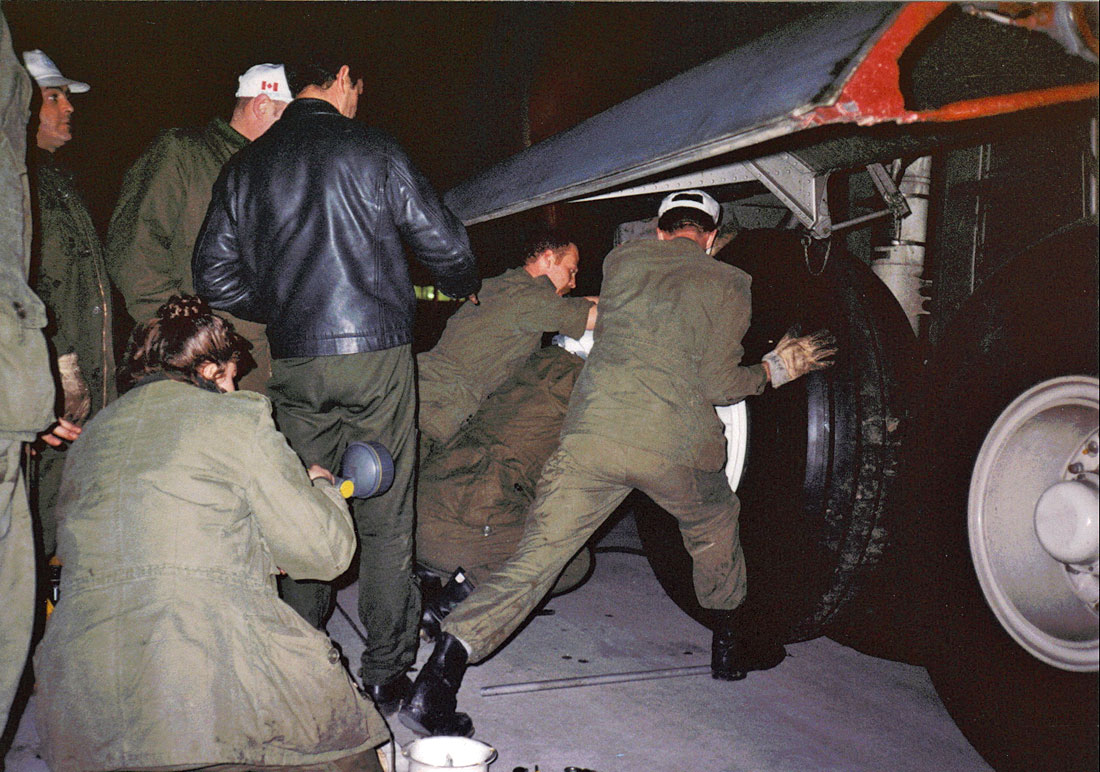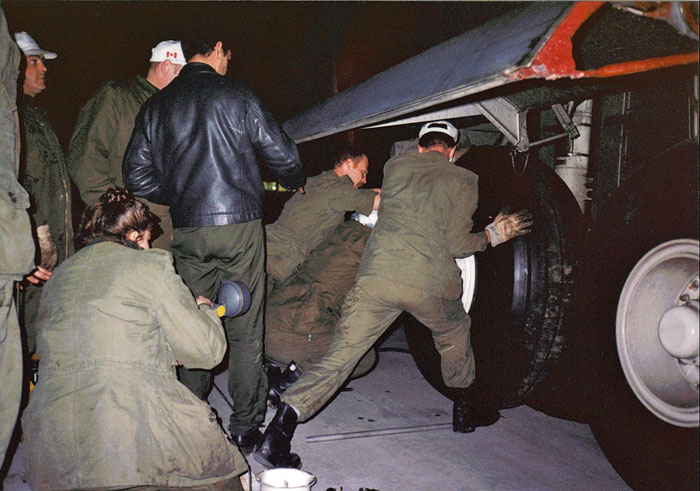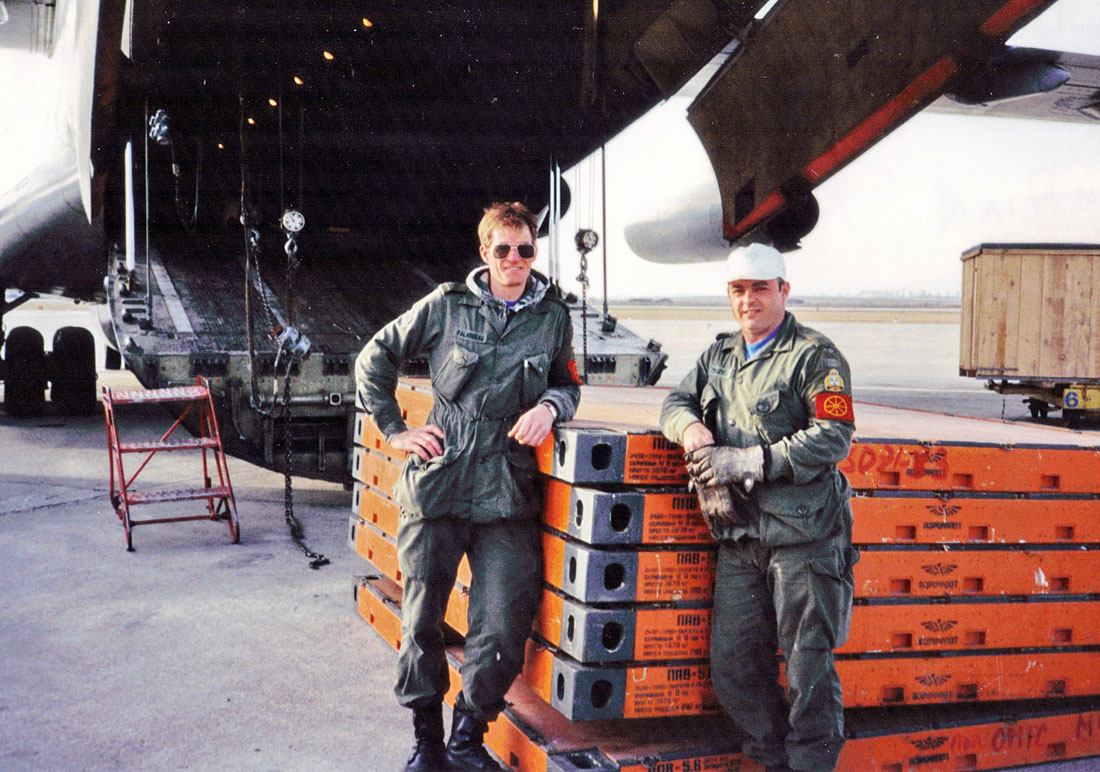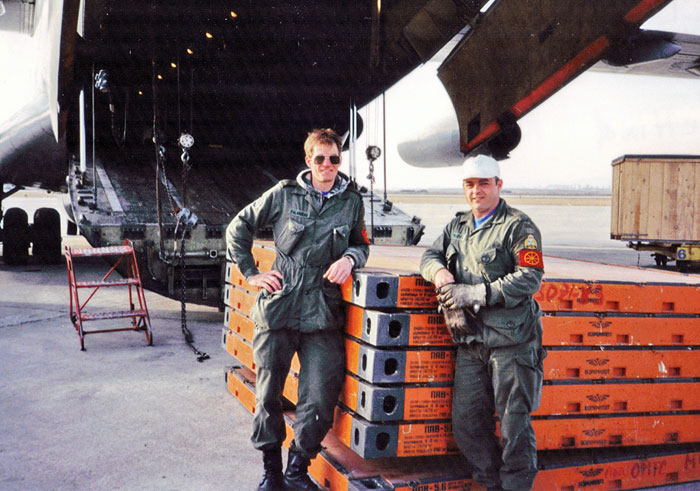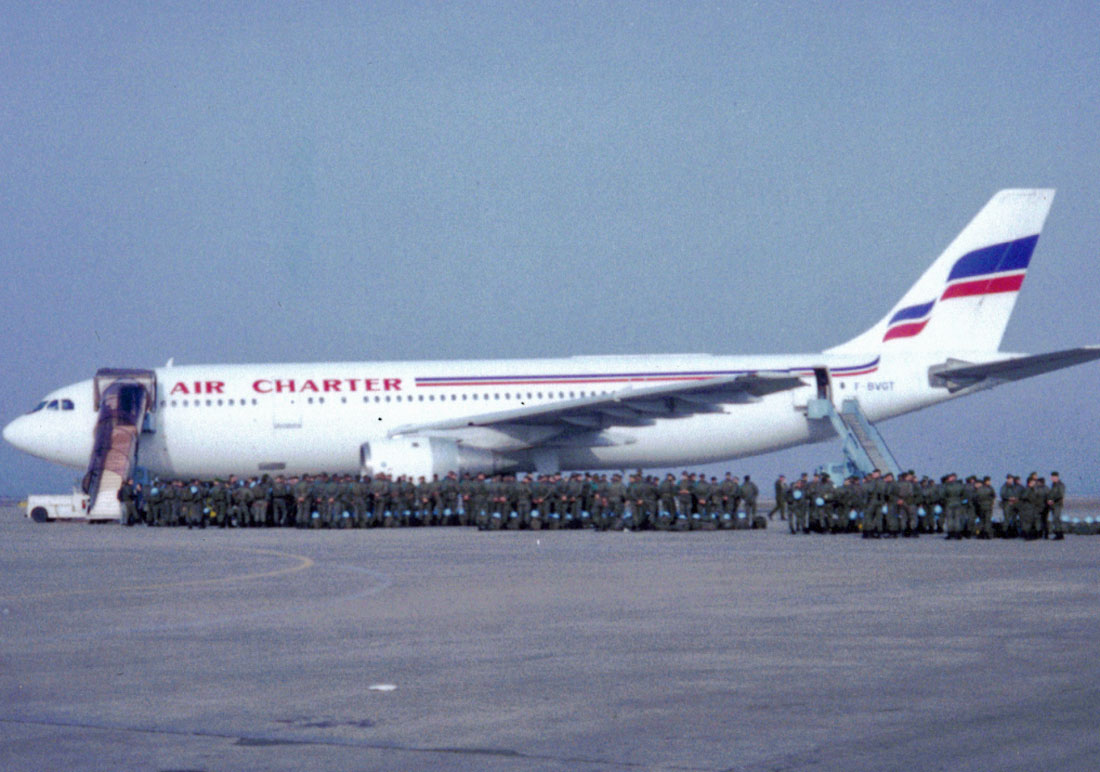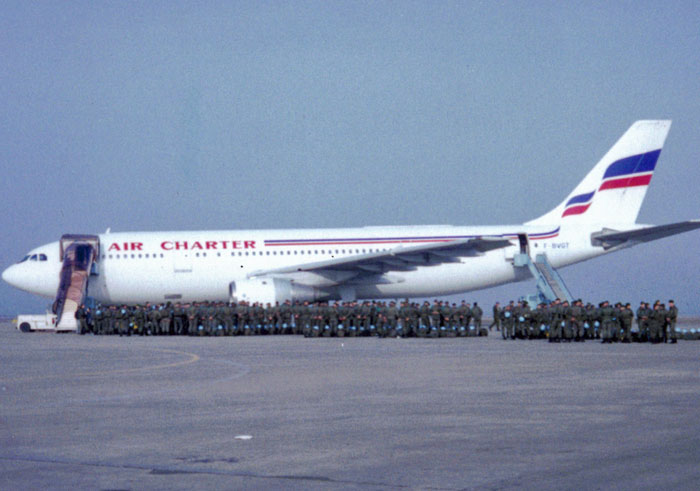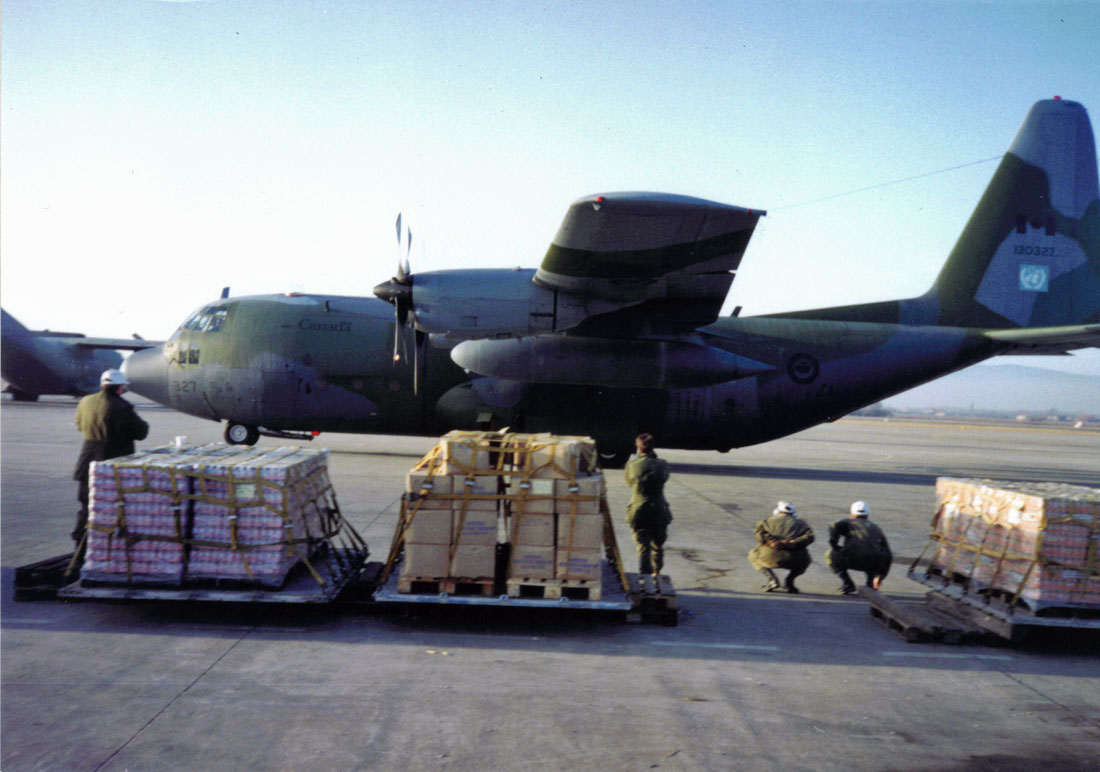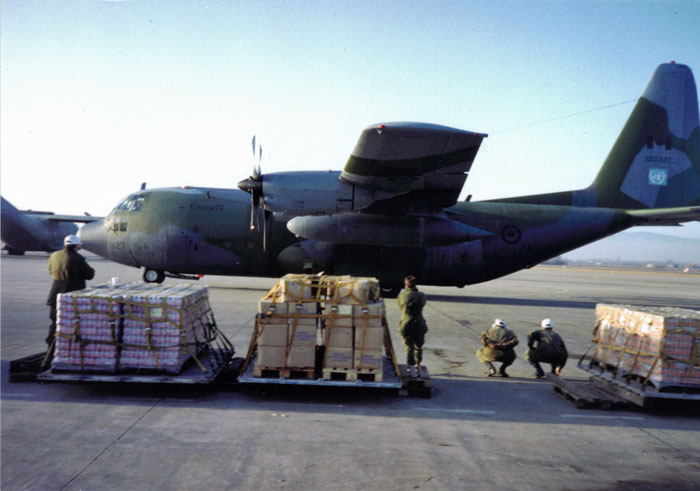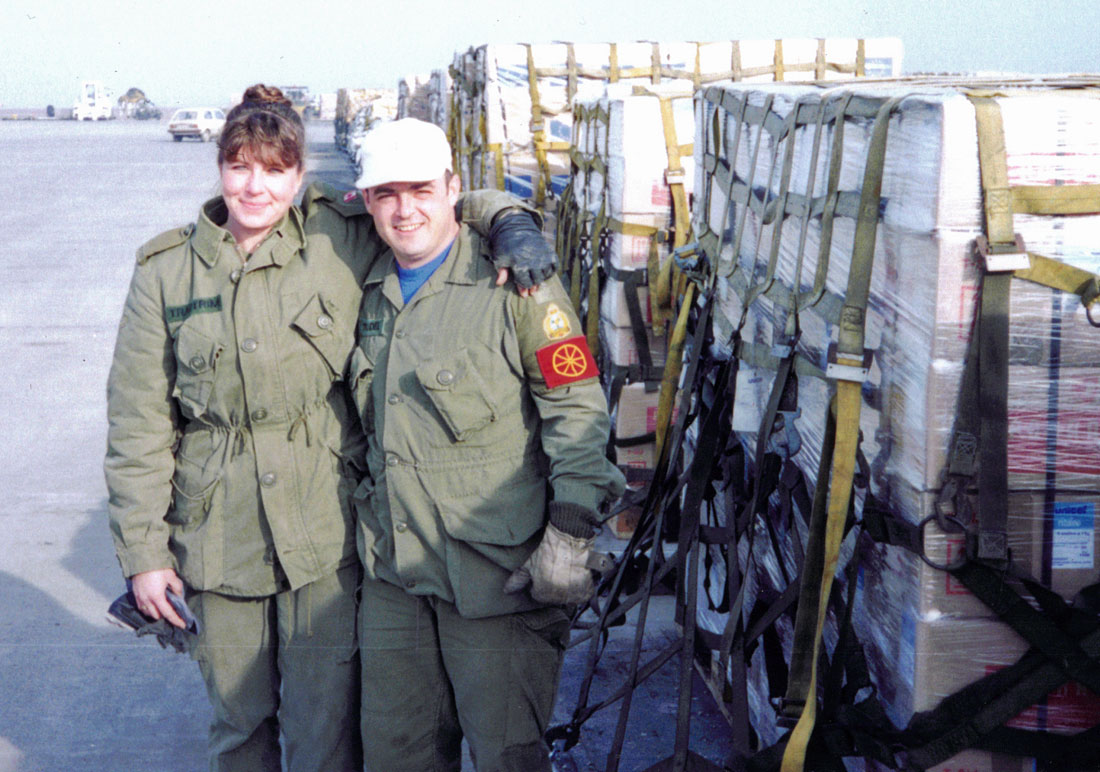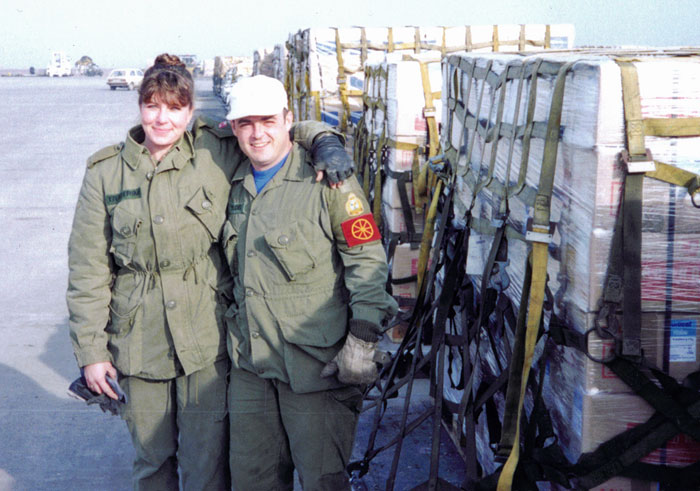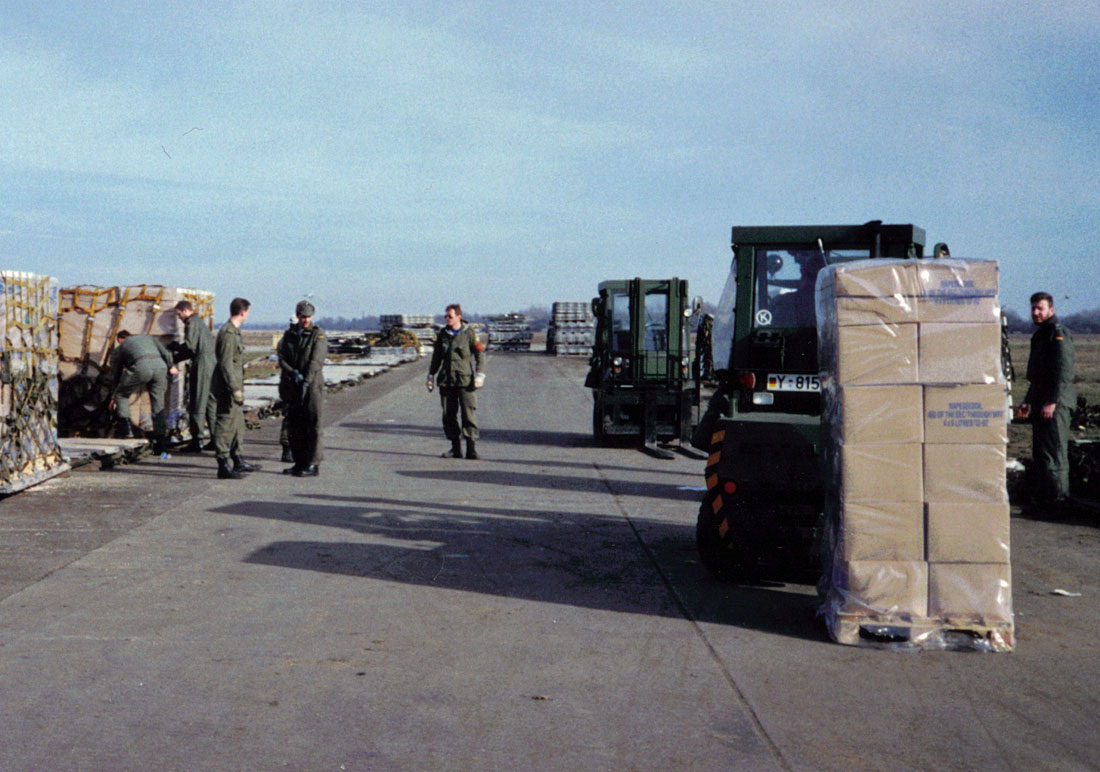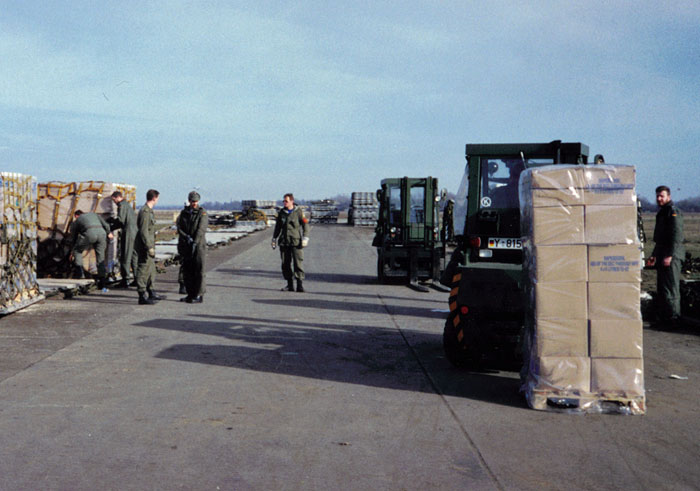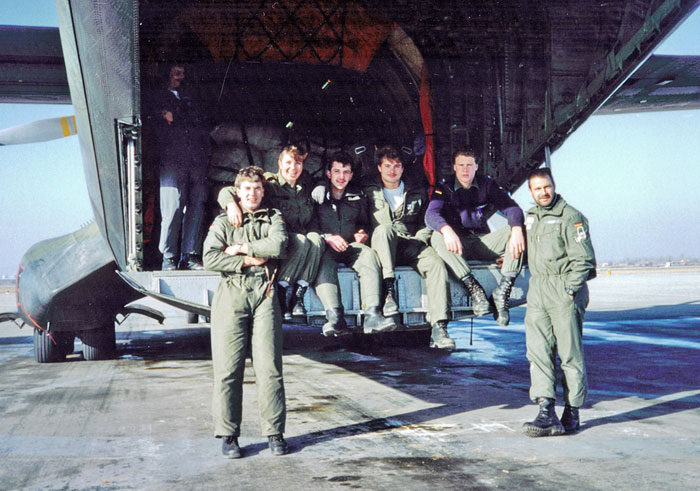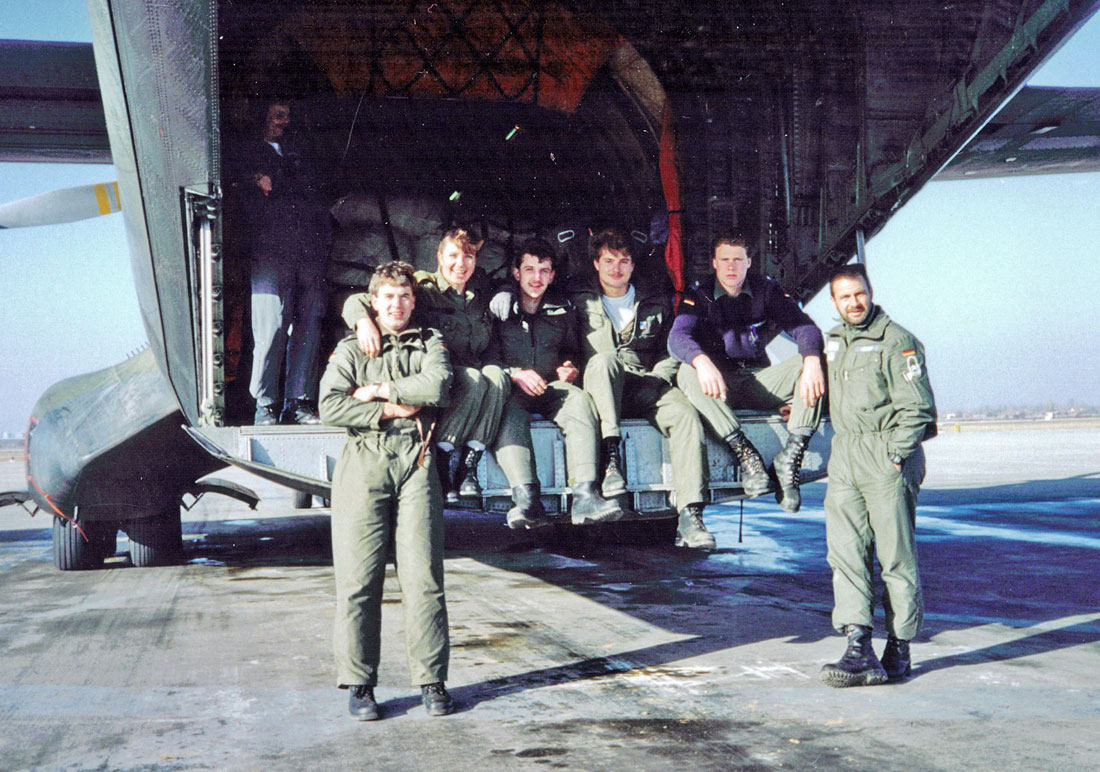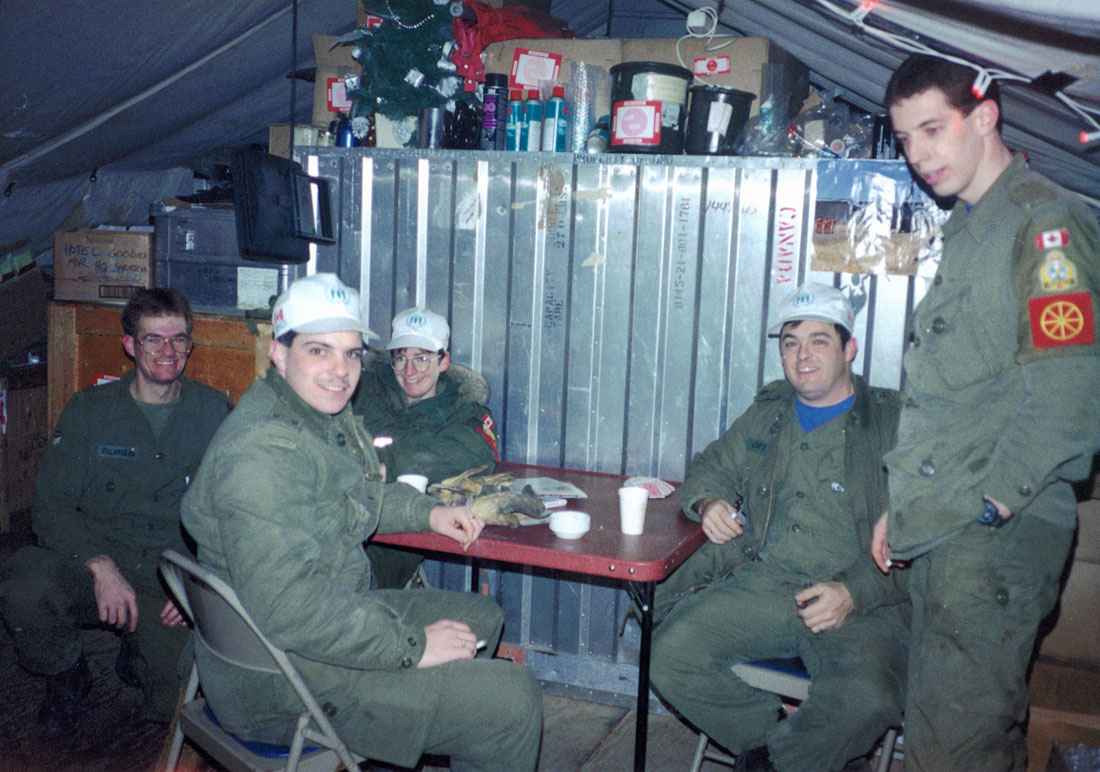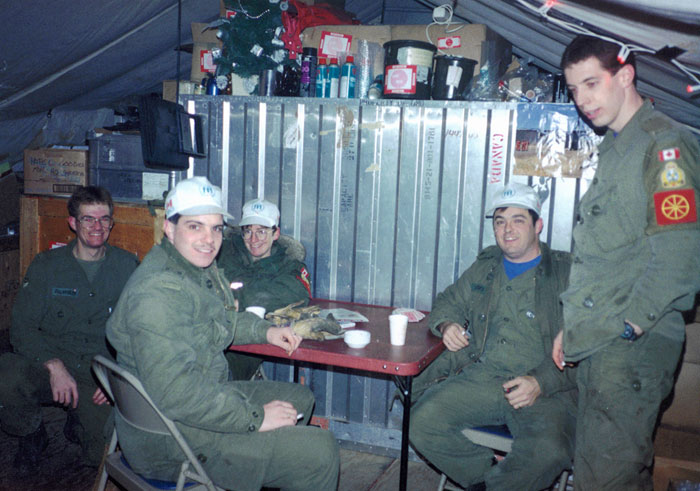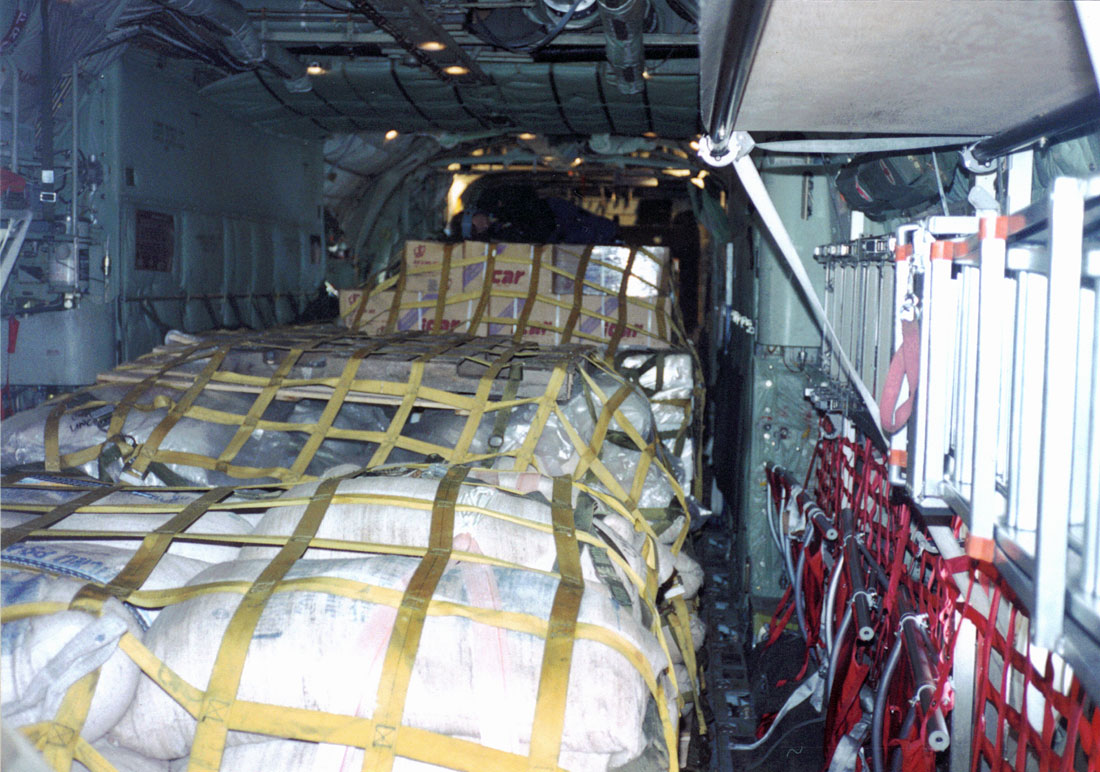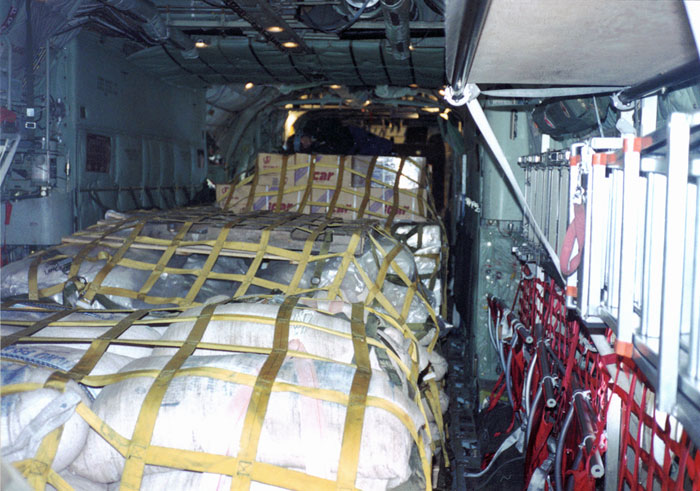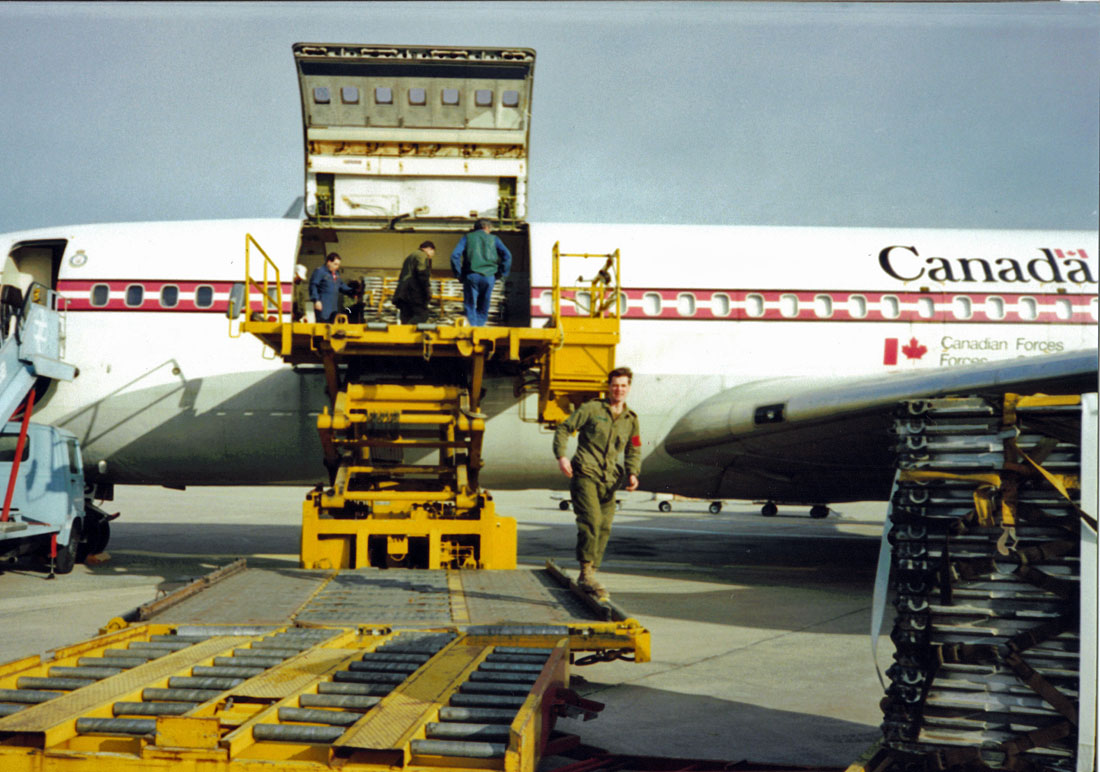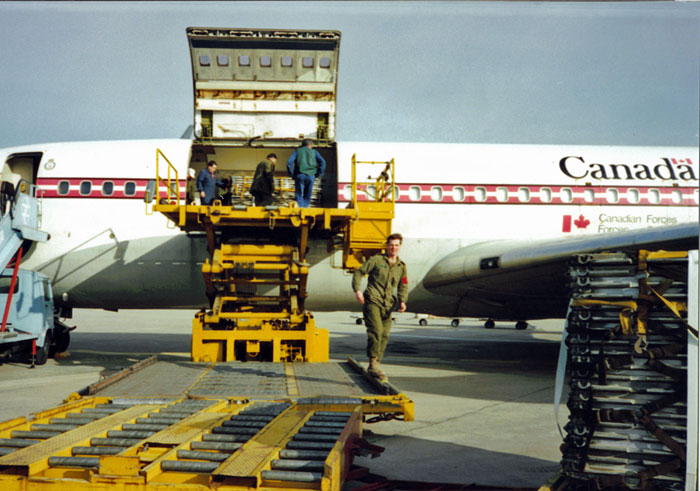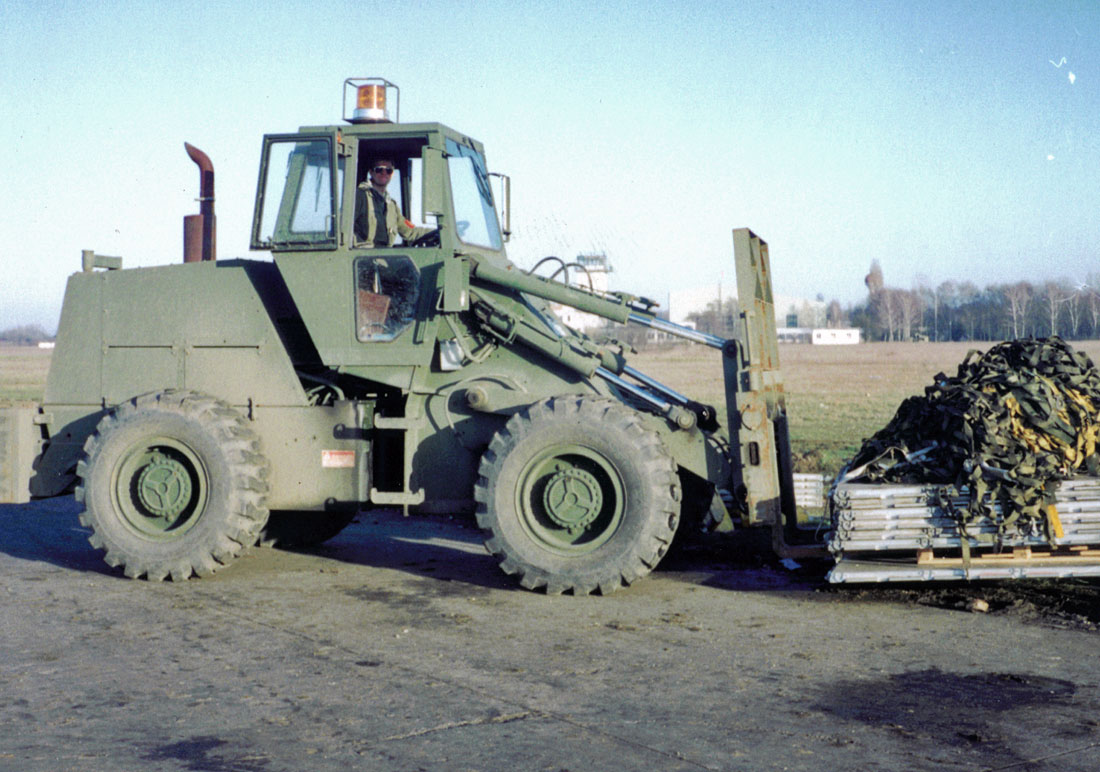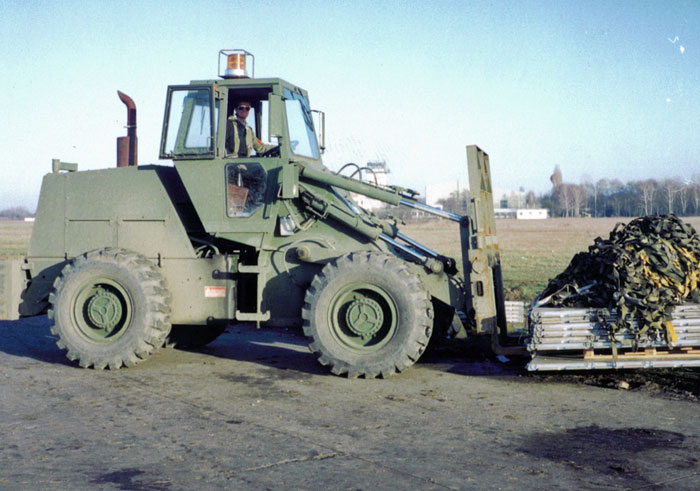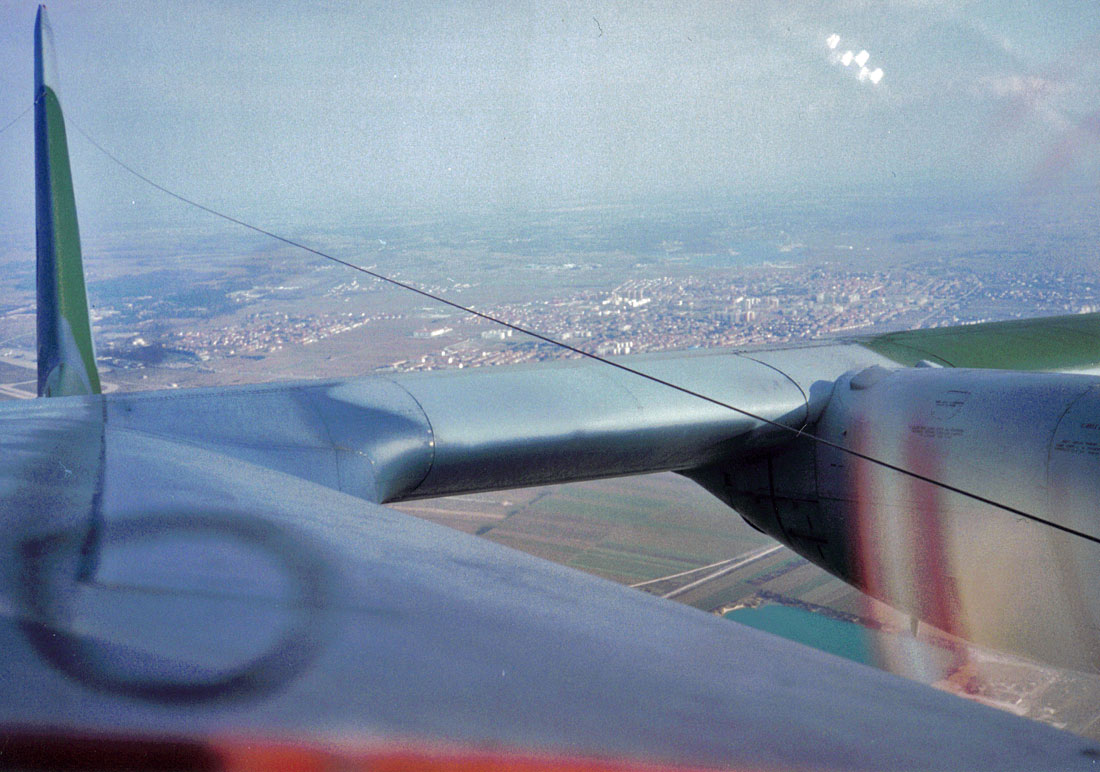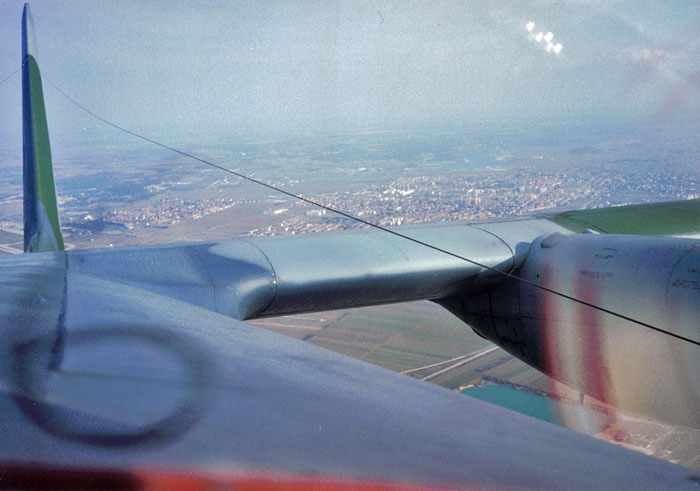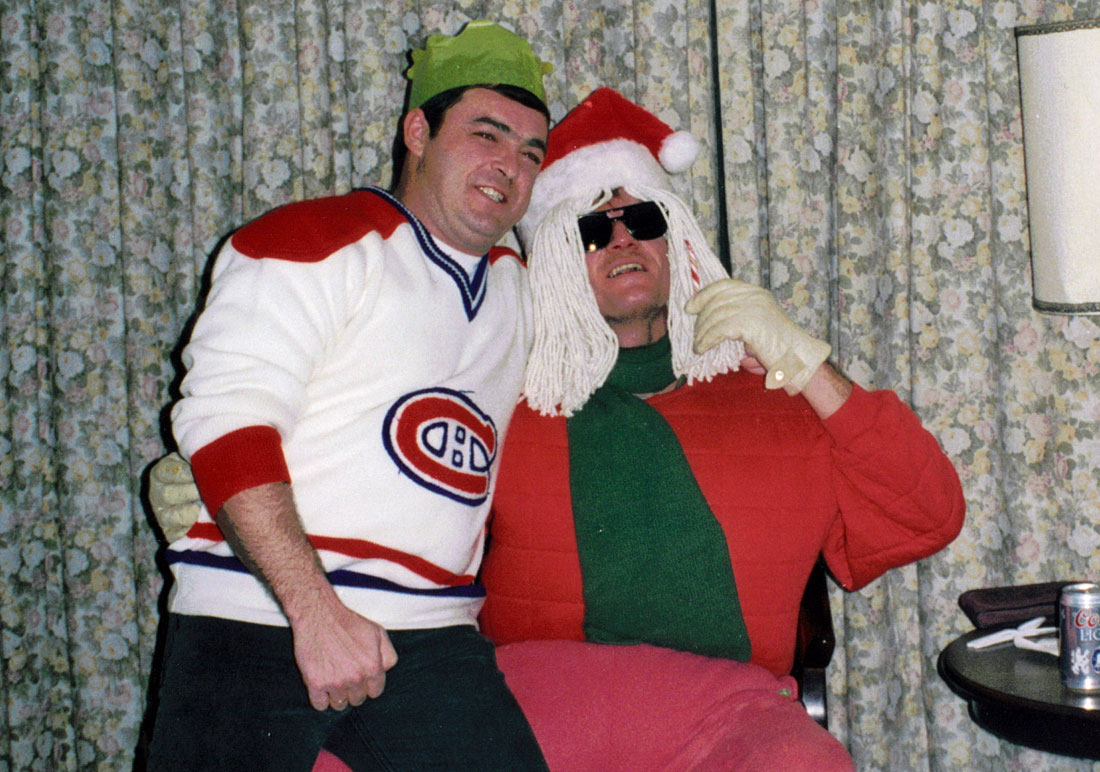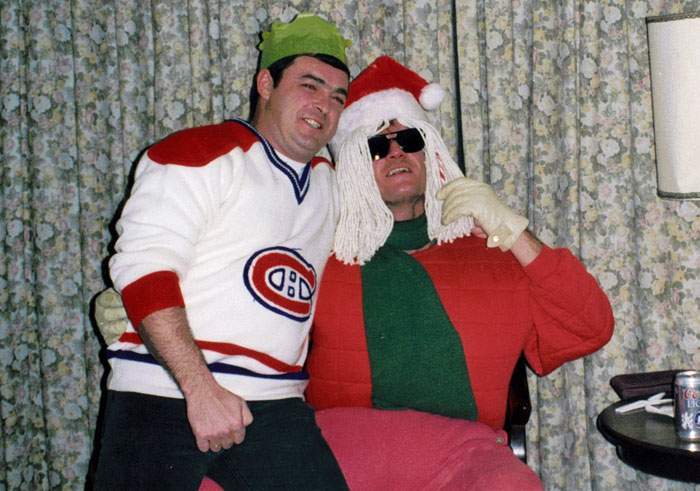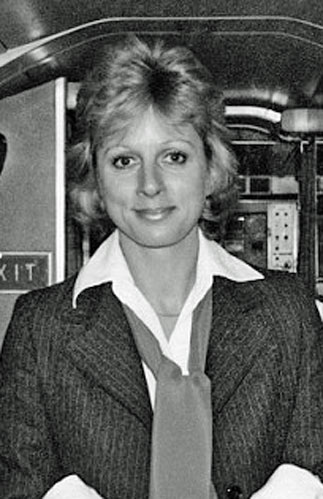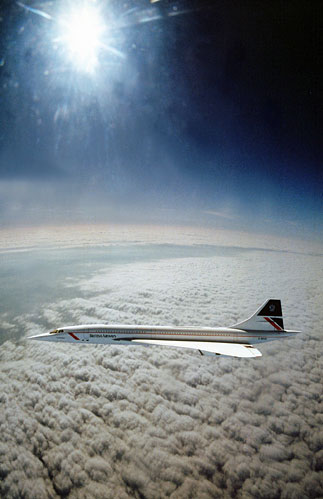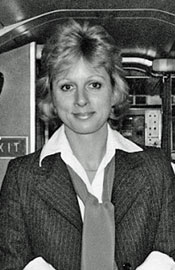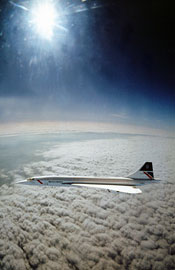The 400kg dugong’s condition has been failing since
it was first seen in Merimbula Lake in November
it was first seen in Merimbula Lake in November
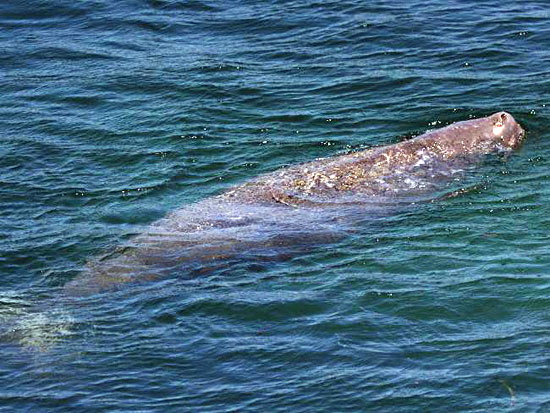
From: George Graves, Carlisle
Subject: Online at last!
Hi Tony,
I just managed to get on line at last, still learning. Thanks for all the work you do and I send my best wishes you and all Movers everywhere.
George Graves
FEAF MAMS 1967/69
Subject: Online at last!
Hi Tony,
I just managed to get on line at last, still learning. Thanks for all the work you do and I send my best wishes you and all Movers everywhere.
George Graves
FEAF MAMS 1967/69
From: Alex Masson, Chelmsford, Essex
Subject: Happy Christmas!
Hello Tony,
Sorry I missed your deadline for the Christmas Brief. I must apologise for not managing to get things sorted. What a fantastic edition! Well done yet again. You really have become most popular with Movers the world over. I have read through the latest with great interest recognising many from the articles they have previously written.
Sadly, of course there are very few now from my era - I must be one of your oldest Dinosaurs! - Looking at 80 in 2016. Nevertheless, I’ll take this opportunity to wish you and yours a very Happy Christmas and a Peaceful and Healthy New Year!
Best wishes and regards,
Alex and Heather ("Legs" as Old Jack used to call her)
Subject: Happy Christmas!
Hello Tony,
Sorry I missed your deadline for the Christmas Brief. I must apologise for not managing to get things sorted. What a fantastic edition! Well done yet again. You really have become most popular with Movers the world over. I have read through the latest with great interest recognising many from the articles they have previously written.
Sadly, of course there are very few now from my era - I must be one of your oldest Dinosaurs! - Looking at 80 in 2016. Nevertheless, I’ll take this opportunity to wish you and yours a very Happy Christmas and a Peaceful and Healthy New Year!
Best wishes and regards,
Alex and Heather ("Legs" as Old Jack used to call her)
From: Phil Overson, Swindon, Wilts
Subject: Happy Christmas
Dear Tony,
Happy Christmas and thank you for another year of Old Bods Association newsletters. I particularly enjoyed the Xmas edition with all the greetings from around the globe.
I spotted a familiar face at the very bottom of the last page under the caption "Christmas in Sarajevo" - none other than Ingrid Trautrim of the CAF. Ingrid was stationed in Zagreb, Croatia, alongside the RAF Movers during the winter of '92/93 and we used to assist each other building pallets and loading supplies for the Sarajevo airlift whilst the city was under siege at the height of the Bosnian war.
We used to take it in turns flying up to Sarajevo doing "Ke Sahn tactical approaches" and very rapid offloads, often under fire, up to three times a day.
Naturally she was nicknamed Ingrid "True trim" and was a mean JCB and 10K forks driver as well as quite a looker! The Canadians were a great bunch, full of fun, and we shared a lot of laughs building pallets with frozen nets in temperatures as low as -25 deg C.
I believe the Canadian team were detached from CFB Trenton. Great times - dangerous but memorable.
All the best for 2016,
Phil Overson
UKMAMS Kilo Team '91-'96
Subject: Happy Christmas
Dear Tony,
Happy Christmas and thank you for another year of Old Bods Association newsletters. I particularly enjoyed the Xmas edition with all the greetings from around the globe.
I spotted a familiar face at the very bottom of the last page under the caption "Christmas in Sarajevo" - none other than Ingrid Trautrim of the CAF. Ingrid was stationed in Zagreb, Croatia, alongside the RAF Movers during the winter of '92/93 and we used to assist each other building pallets and loading supplies for the Sarajevo airlift whilst the city was under siege at the height of the Bosnian war.
We used to take it in turns flying up to Sarajevo doing "Ke Sahn tactical approaches" and very rapid offloads, often under fire, up to three times a day.
Naturally she was nicknamed Ingrid "True trim" and was a mean JCB and 10K forks driver as well as quite a looker! The Canadians were a great bunch, full of fun, and we shared a lot of laughs building pallets with frozen nets in temperatures as low as -25 deg C.
I believe the Canadian team were detached from CFB Trenton. Great times - dangerous but memorable.
All the best for 2016,
Phil Overson
UKMAMS Kilo Team '91-'96


From: Andrew Gell, Cheltenham
Subject: Re: Ray Hedinburgh (RAF)
Dear Tony,
Thank you for letting us know the sad news of Ray's death. He was the Sqn WO when I was SAMO at Akrotiri. Ray and Sue were a popular couple and Ray's gentle personality allowed him to act as something of a father figure to the younger members of the team. I also remember with amusement (now) the careful way in which he broke the news to me one night that an enthusiastic mover had managed to punch the tines of an FLT through the skin of a C130!
Subject: Re: Ray Hedinburgh (RAF)
Dear Tony,
Thank you for letting us know the sad news of Ray's death. He was the Sqn WO when I was SAMO at Akrotiri. Ray and Sue were a popular couple and Ray's gentle personality allowed him to act as something of a father figure to the younger members of the team. I also remember with amusement (now) the careful way in which he broke the news to me one night that an enthusiastic mover had managed to punch the tines of an FLT through the skin of a C130!
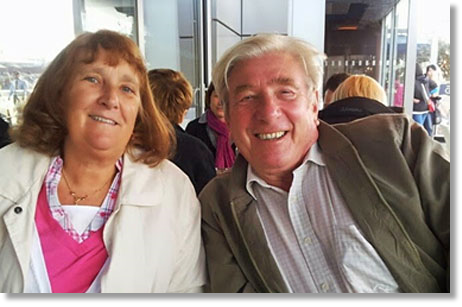
I remember asking Ray and Sue to go as representatives of the Movs Sqn to a drinks reception on board the Royal Yacht Britannia, which was anchored off Akrotiri when the Queen came out to open the Commonwealth Head of Government Conference in Cyprus in 1994. He was also OC of the SSVC Astra station cinema and fought long and hard to get the projectors replaced, at a cost of some tens of thousands of pounds. Another campaign close to his heart was an ongoing battle with a reluctant Brize to keep a Tri-Star baggage tin at Akrotiri to help with turnarounds of the pax schedule. That was a long campaign between WOs, with battles won and lost by both sides.
Ray's passing is shocking, sad and premature.
Andy Gell
Ray's passing is shocking, sad and premature.
Andy Gell
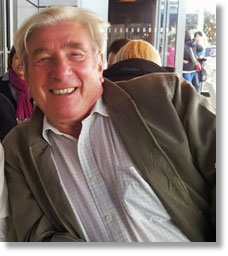
From: Roy Craggs, Las Vegas, NV
Subject: Merry Xmas to all
Thanks to your newsletter, I have kept my memories of my life in the RAF. I joined up in Feb, 1960 and was assigned to Mobile Air Movements (MAMS). Everyone called us Mams boys! We had our own hangar.
I want to wish all you guys and girls all the best for 2016.
Roy Craggs
Subject: Merry Xmas to all
Thanks to your newsletter, I have kept my memories of my life in the RAF. I joined up in Feb, 1960 and was assigned to Mobile Air Movements (MAMS). Everyone called us Mams boys! We had our own hangar.
I want to wish all you guys and girls all the best for 2016.
Roy Craggs
The inclusion of the Sarajevo picture was a nod and a wink to Glen Falardeau who had submitted a lengthy item about that detachment along with oodles of photographs. It was far too big for the Christmas newsletter, so I had promised to put it in this month.
From: Glen Falardeau, Devon, AB
Subject: Christmas away from home, from years gone by
Subject: Christmas away from home, from years gone by
Christmas away from home, from years gone by

Dear Tony,
First let me congratulate and thank you for all the work and time you put into this very professional, well made, informative and entertaining newsletter. By uniting Commonwealth Movers around the globe with historical, comical and current events, you help perpetuate our roots and the camaraderie.
As the title implies this one is from 1993, about one of my Holiday Seasons spent away from my family in the service to my country, to the betterment of this small and fragile world of ours.
For that deployment our MAMS team comprised of seven members; MAMSO Lt Jill Parkinson, Team Leader Sgt Marc Trudel, 2 i/c MCpl Glen Falardeau, Cpl Ingrid Trautrim, Pte's Eric Porte, Nicolle Mallette and Dave Brewer.
On that particular MAMS deployment we were part of a Canadian ALCE (a temporary Air Lift Control Element detachment that typically comprised of Movers, Supply Techs, aircraft Maintainers, Flight Crews, Finances etc.) working out of a tent set up on the apron at the Zagreb Aerodrome in Croatia (which was part of Yugoslavia until 1991).
Our mission was to build palletized aircraft loads, consisting mainly of food, and expedite them to the the mostly destroyed City of Sarajevo on behalf of the UNHCR. At one time Sarajevo used to be a model metropolis for tolerance and multiculturalism, the site of the 1984 Winter Olympics and much more before it's destruction after the death of Tito in 1980 and the fall of the Soviet Union in 1991. So Canada was committed among other things to support the refugees in a devastated city still under siege (1992-96) from shelling and sniper fire coming from the surrounding mountains. We conducted our task arduously in total cooperation and harmony with other teams of Movers from the UK, Germany, Italy and the US.
First let me congratulate and thank you for all the work and time you put into this very professional, well made, informative and entertaining newsletter. By uniting Commonwealth Movers around the globe with historical, comical and current events, you help perpetuate our roots and the camaraderie.
As the title implies this one is from 1993, about one of my Holiday Seasons spent away from my family in the service to my country, to the betterment of this small and fragile world of ours.
For that deployment our MAMS team comprised of seven members; MAMSO Lt Jill Parkinson, Team Leader Sgt Marc Trudel, 2 i/c MCpl Glen Falardeau, Cpl Ingrid Trautrim, Pte's Eric Porte, Nicolle Mallette and Dave Brewer.
On that particular MAMS deployment we were part of a Canadian ALCE (a temporary Air Lift Control Element detachment that typically comprised of Movers, Supply Techs, aircraft Maintainers, Flight Crews, Finances etc.) working out of a tent set up on the apron at the Zagreb Aerodrome in Croatia (which was part of Yugoslavia until 1991).
Our mission was to build palletized aircraft loads, consisting mainly of food, and expedite them to the the mostly destroyed City of Sarajevo on behalf of the UNHCR. At one time Sarajevo used to be a model metropolis for tolerance and multiculturalism, the site of the 1984 Winter Olympics and much more before it's destruction after the death of Tito in 1980 and the fall of the Soviet Union in 1991. So Canada was committed among other things to support the refugees in a devastated city still under siege (1992-96) from shelling and sniper fire coming from the surrounding mountains. We conducted our task arduously in total cooperation and harmony with other teams of Movers from the UK, Germany, Italy and the US.

From truck off-load, pallet build-up to aircraft loading the whole operations was taking place right on the tarmac in a busy area nicknamed "Pallet Alley". When the load plan and the weight & balance were safely completed in accordance with higher payload war specs, the much needed lifesaving goods were positioned awaiting loading onto Canadian CC-130s just a few hundred yards away. They sometimes were loaded onto stretch RAF Hercs as well as the odd German Transall (affectionately called Baby Hercs). Being in winter, although milder than what we were more accustomed to, Zagreb was regularly blanketed with thick pea soup fog that could linger from morning to late afternoon. Some days we would load one plane, others four. There were a few exceptions to the schedule; a few days of snow and -15°C to -20°C. The worst part was often usually due to our forklifts failure to start sometimes, even at just above 0°C. As I recall night flying was not permitted. Speaking of night-time, one did not want to be out in Zagreb at night on New Year's Eve as it seems anyone owning a gun (everyone) was firing it up in the air, for the most part! So for those reasons we stayed in our quarters to celebrate Christmas and the New Year, but that does not mean we did not make the most of it!
From one day to another Zagreb airport was always buzzing with activity, whether militarily or civilian. Sometimes all work (regardless of urgency) would completely cease for the time being when the Croatian President's plane was around regardless of him being on board or not! Security was high and assassination attempts commonplace. Other days would see new fixed or rotary planes from various agencies show up to the already crowded decor while on others the almost incognito mighty French Legions would be waiting on the open tarmac to board a charter flight for another unspecified operation. Obviously being on Croatian soil during this decisive time, patriotism and survival period the Croatian Air Force was prevalent daily with Migs, HIP Medium lift transport and attack helicopters, Medevacs and recce aircraft.
From one day to another Zagreb airport was always buzzing with activity, whether militarily or civilian. Sometimes all work (regardless of urgency) would completely cease for the time being when the Croatian President's plane was around regardless of him being on board or not! Security was high and assassination attempts commonplace. Other days would see new fixed or rotary planes from various agencies show up to the already crowded decor while on others the almost incognito mighty French Legions would be waiting on the open tarmac to board a charter flight for another unspecified operation. Obviously being on Croatian soil during this decisive time, patriotism and survival period the Croatian Air Force was prevalent daily with Migs, HIP Medium lift transport and attack helicopters, Medevacs and recce aircraft.
I also remember accompanying a few loads on RAF and Canadian Hercs where we would go on to off-load in about 8 minutes or so! They were quick "hot turn arounds" where as at least one engine was left running. I remember the roller-coaster like rides one would experience while flying high above the ground with the ever present threats of rockets and missile launcher attacks. After descending to 15,000' we would then drop the beast down like there was no tomorrow only to level up and land at breakneck speed to off-load and get airborne just as quickly and at as steep an angle as possible.
One day after such a routine sortie, after about 5 hours in the air, upon getting back to Zagreb we found a few small arms bullet holes on the airframe of our UK C-130. No big fuss was ever made about it; it got patched up and was readied for the next mission.
All in all it was just one more great adventure under my belt. Our MAMS team was superb as we all got along marvelously and while helping each others' participating nations we got the job done as required without incidents. Some friendships still remain after all these years.
One day after such a routine sortie, after about 5 hours in the air, upon getting back to Zagreb we found a few small arms bullet holes on the airframe of our UK C-130. No big fuss was ever made about it; it got patched up and was readied for the next mission.
All in all it was just one more great adventure under my belt. Our MAMS team was superb as we all got along marvelously and while helping each others' participating nations we got the job done as required without incidents. Some friendships still remain after all these years.
They were eye-opening times indeed making one appreciate the peace most civilians take for granted back home as they might just see a 2 second clip of some world event that doesn't affect their normal routine. Having said that, as a Canadian coming back from such locales where war, hatred and little or no laws of the land prevailed to keep some semblance of a corruption free country, I often came back to my peaceful town without a fuss, no one noticing what or why I had done what was asked of me to do in harms way. I suppose it is something you have or had to get used to and perhaps one of the causes of the then not so publicized PTSD factors! Looking back I think I managed pretty good and to this day I still have no regrets.
In closing, as most (if not all) of our open minded and tolerant Armed Forces of the Commonwealth Alliance employ Service Members of diverse backgrounds and religious beliefs or not, I would like to sincerely wish you all a Happy Holiday Season and the very best for 2016. Peace and Love.
Cheers,
Glen Falardeau, CD
MCpl (ret'd)
In closing, as most (if not all) of our open minded and tolerant Armed Forces of the Commonwealth Alliance employ Service Members of diverse backgrounds and religious beliefs or not, I would like to sincerely wish you all a Happy Holiday Season and the very best for 2016. Peace and Love.
Cheers,
Glen Falardeau, CD
MCpl (ret'd)
Ingrid - hot turnaround in Sarajevo
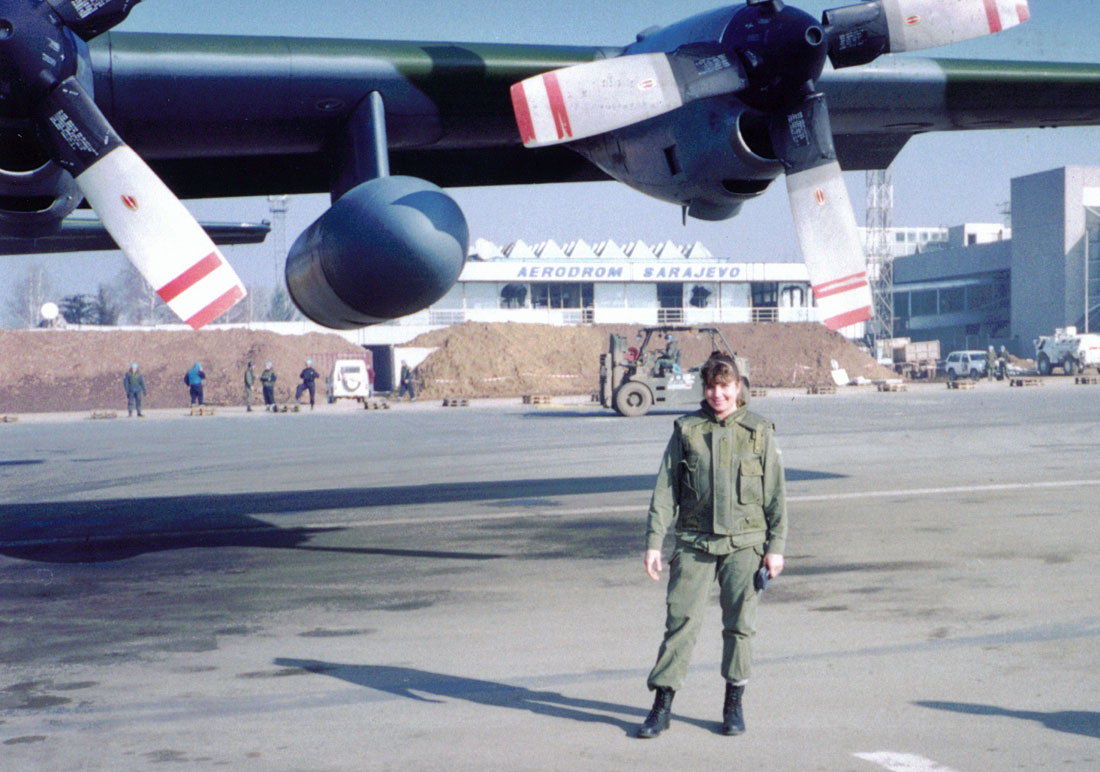
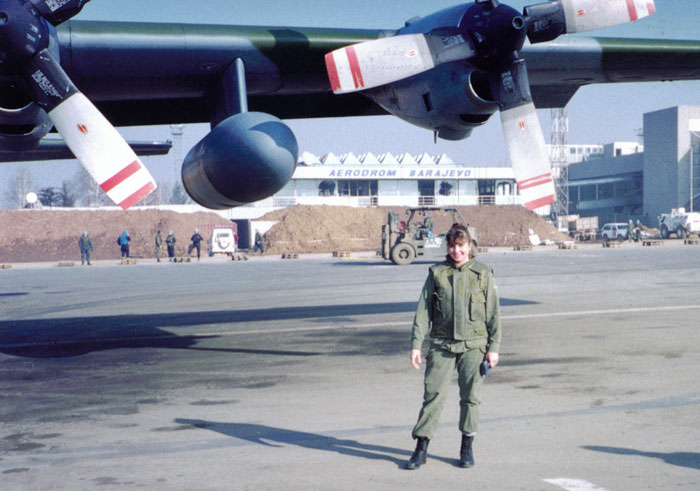
Ingrid - hot turnaround in Sarajevo
Where Are They Now? Once-Mighty Harrier Fleet Languishes
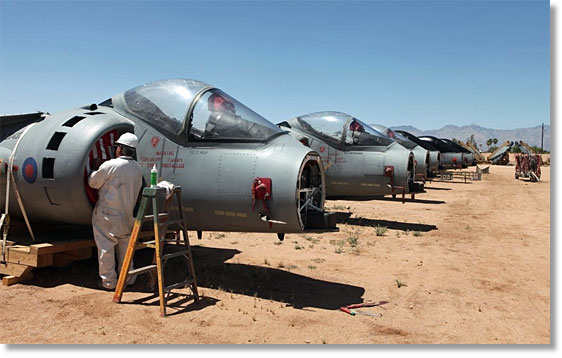
Having deployed victoriously on operations to help Britain defeat Argentina in The Falklands and in the Yugoslav War of the 1990's, their iconic status is preserved. Used across the world by military air arms from Italy to India, this revolutionary aircraft now lays withered and broken in America's aircraft 'boneyard'. What was once the pride of the RAF and Royal Navy, the now-skeletal Harrier fleet is used for spare parts.
The fate of the Harriers, and the question of what should replace them, caused a political storm. After much mud-slinging and many U-turns over the pros and cons of F35-B versus F35-C capability, the Harriers replacement was finally decided.
The replacement for the Harrier, the F35-B, still hasn't arrived. Embroiled in debates over it's close range capability, and with spiralling 'fly away' unit prices, what is now certain is that it will cost Britain more, per plane, than the entire Harrier fleet fetched at market in 2011.
The replacement for the Harrier, the F35-B, still hasn't arrived. Embroiled in debates over it's close range capability, and with spiralling 'fly away' unit prices, what is now certain is that it will cost Britain more, per plane, than the entire Harrier fleet fetched at market in 2011.
The iconic British Harriers lay still and silent, baking under the Arizona Sun. In the dry desert of the South-Western US, vast swathes of abandoned aircraft lie in various states of disrepair. Among them, is the remainder of a once proud, now legendary, Harrier fleet.
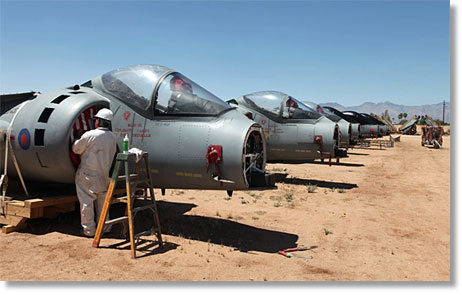
America bought all of Britain’s 77 Harrier aircraft for the nominal sum of £110 million. Rear Admiral Mark Heinrich, chief of the US Navy’s procurement, explained the deal made sense because many of the British jets had recently undergone a refit - and the US already had pilots who could fly them.
He conceded: "We’re taking advantage of all the money the Brits have spent on them. It’s like we’re buying a car with maybe 15,000 miles on it. These are very good platforms. And we’ve already got trained pilots."
Since then, however, the Ministry of Defence have saved a considerable sum, and following a freedom of information request submitted in 2013 said: "When the value of the sale is added to the savings made from retiring the Harrier fleet from service, the total estimated receipts and savings to the MOD is around £1 billion."
Two aircraft were also retained by the MOD for training purposes. One is at the Royal Navy Air Engineering & Survival School, Gosport and the other is at RAF Wittering in Lincolnshire. The Fleet Air Arm Museum, the RAF Museum and the Imperial War Museum each received one Harrier aircraft in order to preserve the UK’s military heritage.
Forces TV
He conceded: "We’re taking advantage of all the money the Brits have spent on them. It’s like we’re buying a car with maybe 15,000 miles on it. These are very good platforms. And we’ve already got trained pilots."
Since then, however, the Ministry of Defence have saved a considerable sum, and following a freedom of information request submitted in 2013 said: "When the value of the sale is added to the savings made from retiring the Harrier fleet from service, the total estimated receipts and savings to the MOD is around £1 billion."
Two aircraft were also retained by the MOD for training purposes. One is at the Royal Navy Air Engineering & Survival School, Gosport and the other is at RAF Wittering in Lincolnshire. The Fleet Air Arm Museum, the RAF Museum and the Imperial War Museum each received one Harrier aircraft in order to preserve the UK’s military heritage.
Forces TV
Dugong rescue: Sea cow flown to Sea World on
the Gold Coast by Royal Australian Air Force
the Gold Coast by Royal Australian Air Force
An RAAF Hercules plane is transporting an unusual passenger on a special flight from NSW to Queensland - a 400kg dugong.
On 21 January 2016, an Air Force C-130J Hercules supported a request from the civil community to transport a dugong from Merimbula on the New South Wales south coast to Gold Coast in Queensland.
The dugong was discovered by Merimbula locals in November 2015, however its condition deteriorated over the holiday period as the animal was out of its natural habitat.
The dugong was loaded onto the Hercules in a fibreglass box, and kept hydrated with a hose during the flight, whilst the Hercules' aircrew kept the aircraft's cabin at a sea-level air pressure.
On arrival at the Gold Coast Airport, the dugong was taken on a truck to Sea World, where it will be rehabilitated before being released into its natural habitat.
Australian Government Department of Defence/Daily Telegraph
On 21 January 2016, an Air Force C-130J Hercules supported a request from the civil community to transport a dugong from Merimbula on the New South Wales south coast to Gold Coast in Queensland.
The dugong was discovered by Merimbula locals in November 2015, however its condition deteriorated over the holiday period as the animal was out of its natural habitat.
The dugong was loaded onto the Hercules in a fibreglass box, and kept hydrated with a hose during the flight, whilst the Hercules' aircrew kept the aircraft's cabin at a sea-level air pressure.
On arrival at the Gold Coast Airport, the dugong was taken on a truck to Sea World, where it will be rehabilitated before being released into its natural habitat.
Australian Government Department of Defence/Daily Telegraph
Photo of the Month
An LC-130 "Skibird" from the 109th Airlift Wing sits on the ice runway near McMurdo Station, Antarctica for Operation Deep Freeze. (Notice the skis, 8-blades and JATO)
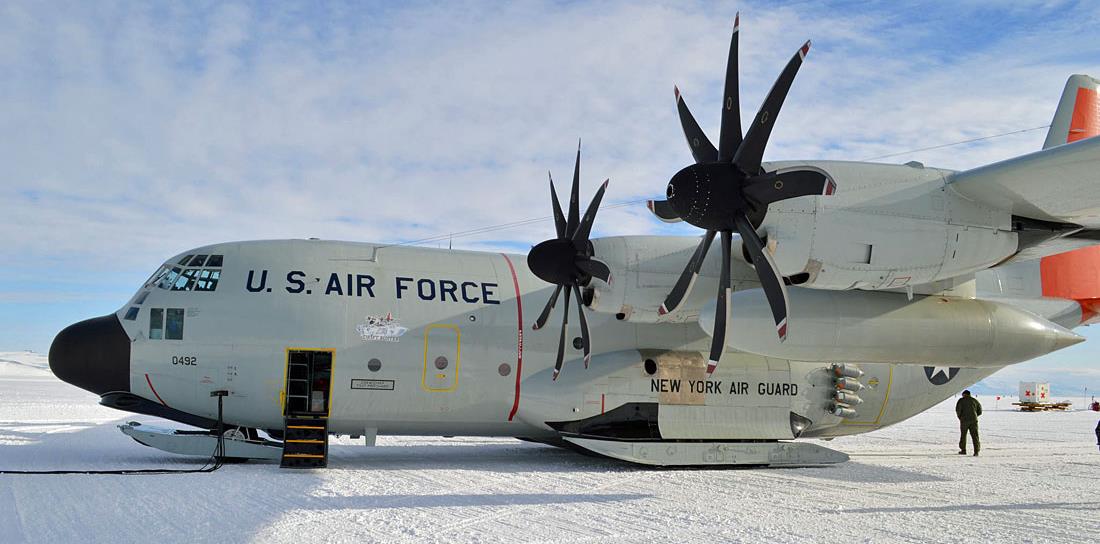
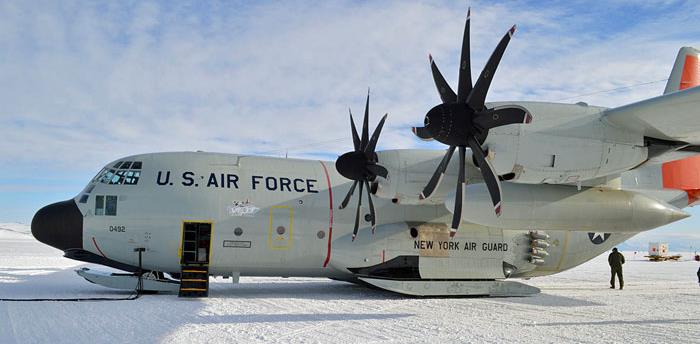
From: Joseph Gillis, Grand Mira South, NS
Subject: Faux Pas
Hi Tony,
Thanks again for featuring my CD in the last publication.
In case you get any queries, I made a boo boo in a statement in my “CD Notes”. I said that "Will Ye No Come Back Again” was written because of that phrase uttered after Robert The Bruce was defeated at the battle of Culloden; don’t know why I said it was him when I knew it was Bonnie Prince Charlie; what was I thinking? So, in case you get any history buffs out there...
Cheers,
Joe
Subject: Faux Pas
Hi Tony,
Thanks again for featuring my CD in the last publication.
In case you get any queries, I made a boo boo in a statement in my “CD Notes”. I said that "Will Ye No Come Back Again” was written because of that phrase uttered after Robert The Bruce was defeated at the battle of Culloden; don’t know why I said it was him when I knew it was Bonnie Prince Charlie; what was I thinking? So, in case you get any history buffs out there...
Cheers,
Joe
From: Tony Gale, Gatineau (sec Aylmer), QC
To: Joseph Gillis, Grand Mira South, NS
Subject: Re: Faux Pas
Hi Joe,
Just received yours regarding the historical faux pas so am now able to forward on to you a message from a passionate Scotsman that tells it like it was. I didn't send it to you at the time as it would have surely been a dampener during your seasonal celebrations.
Best regards
Tony
To: Joseph Gillis, Grand Mira South, NS
Subject: Re: Faux Pas
Hi Joe,
Just received yours regarding the historical faux pas so am now able to forward on to you a message from a passionate Scotsman that tells it like it was. I didn't send it to you at the time as it would have surely been a dampener during your seasonal celebrations.
Best regards
Tony
From: Murdo Macleod, Newport-on-Tay, Fife
Subject: Re: OBA OBB #122115 - Christmas Edition
Subject: Re: OBA OBB #122115 - Christmas Edition
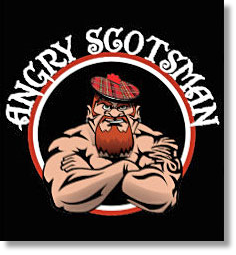
Just a wee correction there for Joe Gillis in Nova Scotia (good song by the way). I, as a patriotic Scot, should point out a couple of wee errors:
King Robert the Bruce (Robert the 1st), was at the battle of Bannockburn, in the 14th century, and the bard Rabbie Burns had yet to be born; while Bonnie Prince Charlie, (Charles Edward Stuart), was at the battle of Culloden, in the 18th century, the century of the bard Robert Burns; easy mistake to make.
King Robert the Bruce (Robert the 1st), was at the battle of Bannockburn, in the 14th century, and the bard Rabbie Burns had yet to be born; while Bonnie Prince Charlie, (Charles Edward Stuart), was at the battle of Culloden, in the 18th century, the century of the bard Robert Burns; easy mistake to make.
Everybody is now thinking that Robert the 1st knew The Wallace (that's William Wallace, the man in Braveheart), and we have Hollywood to thank for that load of old codswallop, they never met, as there was a century between them.
Regards the noo, Murdo Macleod
Regards the noo, Murdo Macleod
Meet the Concorde stewardess who mingled with the stars
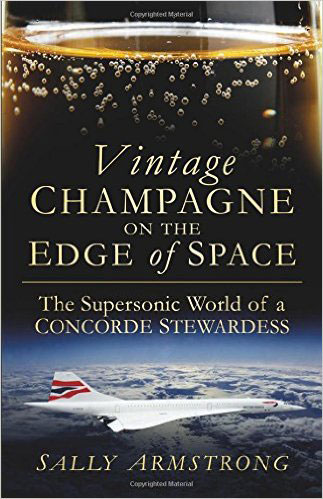
It’s been almost 30 years since Sally Armstrong last flew on Concorde, but her face lights up as she remembers her time as stewardess on the supersonic British Airways aircraft. “It was very glamorous,” she says with a smile.
“Michael Winner was a regular, Robin Gibb - I carried him several times. Paul McCartney was a regular, but I didn’t meet him, Spielberg I met twice, Elizabeth Taylor. I had a date with John Denver in New York. You’d look forward to going to work. Even the most famous passengers would sit there and you would see them trying to act nonchalant, but as soon as we started taxiing you would see the excitement. David Frost described it as a unique flying club. People would know each other, we got to know the passengers.”
“Michael Winner was a regular, Robin Gibb - I carried him several times. Paul McCartney was a regular, but I didn’t meet him, Spielberg I met twice, Elizabeth Taylor. I had a date with John Denver in New York. You’d look forward to going to work. Even the most famous passengers would sit there and you would see them trying to act nonchalant, but as soon as we started taxiing you would see the excitement. David Frost described it as a unique flying club. People would know each other, we got to know the passengers.”
“You do get a bit jet-lagged after a while - the time zones were quite extreme,” she says. “I walked down the corridors of power one morning and there was a notice saying ‘Concorde crew required’. I got all my papers together and I went for an interview and that was it.”
With a take off speed of 250mph and a cruising speed of 1350mph - more than twice the speed of sound - as well as a host of regular celebrity passengers, Concorde was seen as an incredibly prestigious way to travel. A typical London to New York crossing would take just under three-and-half hours and, by the time the aircraft reached the speed of sound, all passengers would have a cocktail or a glass of wine in their hands.
With a take off speed of 250mph and a cruising speed of 1350mph - more than twice the speed of sound - as well as a host of regular celebrity passengers, Concorde was seen as an incredibly prestigious way to travel. A typical London to New York crossing would take just under three-and-half hours and, by the time the aircraft reached the speed of sound, all passengers would have a cocktail or a glass of wine in their hands.
Concorde took 100 passengers and had six cabin crew, who generally had three-and-a-half hours to serve a five-course lunch or dinner menu. It was a tall order, but Sally loved it.
She generally flew from London to Washington and Miami, but also worked on charters, such as flying with the Royal Air Force at air shows, or the time the Saudi royals chartered Concorde to fly from Washington to Nice. “The Queen Mother of Saudi Arabia had an operation in LA,” says Sally , “she flew by private jet to Washington , so we flew out in an empty jet to Washington. We were met by these amazing limos which took us to this wonderful hotel. “The next morning, we went to the aircraft and prepared it, then the royals came along. We flew to Nice. There was the Queen Mother and the three princes and princesses at the front, and 48 entourage in the back . “We made history that time, because it was the longest flight that Concorde ever did - it was four hours.”
She generally flew from London to Washington and Miami, but also worked on charters, such as flying with the Royal Air Force at air shows, or the time the Saudi royals chartered Concorde to fly from Washington to Nice. “The Queen Mother of Saudi Arabia had an operation in LA,” says Sally , “she flew by private jet to Washington , so we flew out in an empty jet to Washington. We were met by these amazing limos which took us to this wonderful hotel. “The next morning, we went to the aircraft and prepared it, then the royals came along. We flew to Nice. There was the Queen Mother and the three princes and princesses at the front, and 48 entourage in the back . “We made history that time, because it was the longest flight that Concorde ever did - it was four hours.”
Sally clearly loved her seven years on Concorde, and admits she never tired of the excitement of the take-off . “The take off speed was something like 225mph , you were airborne within 30 seconds. It was like being in a rocket . It was just amazing. “We loved it, the passengers loved it. It was an amazing aircraft. You talk to any cabin crew who was working on that aircraft, we were just so , so sad when it finished.”
Sally left the airline in 1987, shortly before falling pregnant and starting to write her first novel.
BA withdrew Concorde in October 2003 but Sally, who went on to become an author and a yachting photographer, was keen to keep its memory alive. With the help of a diary of her time on the aircraft and conversations with three captains and a handful of cabin crew , she has now written a book about the Concorde lifestyle, called Vintage Champagne on the Edge of Space. “It was like no other aircraft and I felt, for history, it had to be written,” she says."
Vintage Champagne on the Edge of Space, published by History Press, is available on Amazon.
Bournemouth Echo
Sally left the airline in 1987, shortly before falling pregnant and starting to write her first novel.
BA withdrew Concorde in October 2003 but Sally, who went on to become an author and a yachting photographer, was keen to keep its memory alive. With the help of a diary of her time on the aircraft and conversations with three captains and a handful of cabin crew , she has now written a book about the Concorde lifestyle, called Vintage Champagne on the Edge of Space. “It was like no other aircraft and I felt, for history, it had to be written,” she says."
Vintage Champagne on the Edge of Space, published by History Press, is available on Amazon.
Bournemouth Echo
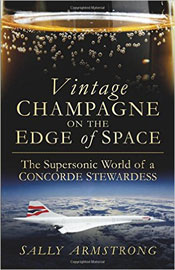
Sally, who now lives in Milford on Sea, began working for BA while flat-sharing with an air stewardess in Richmond. She was working as a teacher at the time, and remembers vividly coming home on the bus one rainy day to find the flat littered with the bikinis of her flatmate, who had just returned from a flight to Nairobi. “I thought, ‘I need to have some of this’,” she laughs. Sally applied to BA and within a year was flying 747s to Japan, Hong Kong, Australia and LA.

RAF
New members who have joined us recently are:
Welcome to the OBA!
George Graves, Carlisle, UK
Andrew Finlayson, Adelaide, SA, Australia
James Pickett, Ottawa, ON, Canada
RCAF

New members who have joined us recently are:
RAF

George Graves, Carlisle, UK
Andrew Finlayson, Adelaide, SA, Australia
Welcome to the OBA!

RCAF
James Pickett, Ottawa, ON, Canada
From: Gerry Davis, Bedminster, Somerset
Subject: Last out just about says it all
Whilst on one of our NEAF MAMS detachments to El Adem in 1966, we (the Sgt, me the Cpl and the two lads) were ordered to board a Pembroke aircraft for two destinations; Idris and Benghazi. We landed at the farthest destination which was RAF Idris (formerly known as RAF Castel Benito) and it was in the process of closing down as an RAF Station. There was only a skeleton detachment of RAF personnel left. The two lads and the sergeant were tasked to load two Hastings aircraft with the last of the essential equipment destined for Cyprus.
Whilst waiting refueling of the aircraft, we all went to get some refreshments. It was noticeable that the entire domestic site of the empty RAF camp was being ransacked by the local Arab populace for all its movable furnishings. There were Lorries, donkeys and camels with trailers, loaded with purloined abandoned goods. The sergeant by the way was most displeased at being left with the two lads, after all he would have to do all the paperwork and assist them in their plight, instead of his usual stance of ‘standing around looking pretty.’
Subject: Last out just about says it all
Whilst on one of our NEAF MAMS detachments to El Adem in 1966, we (the Sgt, me the Cpl and the two lads) were ordered to board a Pembroke aircraft for two destinations; Idris and Benghazi. We landed at the farthest destination which was RAF Idris (formerly known as RAF Castel Benito) and it was in the process of closing down as an RAF Station. There was only a skeleton detachment of RAF personnel left. The two lads and the sergeant were tasked to load two Hastings aircraft with the last of the essential equipment destined for Cyprus.
Whilst waiting refueling of the aircraft, we all went to get some refreshments. It was noticeable that the entire domestic site of the empty RAF camp was being ransacked by the local Arab populace for all its movable furnishings. There were Lorries, donkeys and camels with trailers, loaded with purloined abandoned goods. The sergeant by the way was most displeased at being left with the two lads, after all he would have to do all the paperwork and assist them in their plight, instead of his usual stance of ‘standing around looking pretty.’

Shortly after refueling I boarded the Pembroke for Benghazi. Yes, all on my lonesome! I was told that I had to assist the Loadmaster of an arriving Beverley aircraft, which was coming in fully loaded with supplies for the British Army garrison, and taking out returning cargo for the UK. I was also to arrange labour for this turnaround with the local aircraft handling agent, and hire a fork lift. On completion of this task, the Beverley was to drop me off in Malta, so that I could catch the first flight back to Cyprus.
On landing the pilot of the Pembroke lost no time in taking off again for his base at El Adem. I ambled over the aircraft parking area trying to find the handling agent’s shed. I eventually found it and made myself known to the Indian gent who was in charge of the Apron workforce. He confirmed that he had a Forklift, although on inspection it seemed as though it had been left there by Noah, after the Ark had left.
Noon had passed and I had a further couple of hours to wait for the Beverley to arrive. In the meantime an Army 3-ton lorry arrived, driven by an Arab, accompanied by an Army staff sergeant complete with his red sash and underarm stick. I introduced myself to him, although I immediately got the impression that he looked upon me, being RAF, and only a corporal, as something akin to dog poo on his shoes. I humbly suggested that he have the vehicle off loaded so that it could be driven up to the aircraft directly for offloading. His response was, ”You had better get on with it then!” So I Thought to myself, OK then buddy, you will have to sort it out yourself when I have gone.
The aircraft arrived, and I thought ‘yippee,’ other RAF types to talk to. I was in for a shock there too. I met the Loadmaster and he said that he and the rest of the crew were going for something to eat. I asked him if he was going to assist me in the turnaround with the freight. He said “That’s your job sunshine” and departed. I also spoke to the captain before he left for his meal and asked if he was aware that I was to be dropped off in Malta. He asked for the loading weight for take-off, which I worked out quickly and gave to him. He then calculated that he had sufficient fuel for going straight to Abingdon, their base, as they were expected that night at some function or other. He said “You can either come with us to Abingdon or stay here” He did not want to stop in Malta as he knew there would be further loading onto his aircraft which would take him over the flying duty hours, they would then have to night stop.
I wasn’t having that; I wanted to get back to Cyprus. I asked the handling agent for help, which he kindly offered, although stating that his priorities lie with their scheduled services and I also went to the communications signals office, to send a signal to my HQ Episkopi In Cyprus, pleading for them to get the original plan to drop me off in Malta confirmed to the aircraft captain. I did not want to go back to the UK as I knew I would be stuck in limbo awaiting an air passage back to Cyprus, which might take days, or possibly longer.
Noon had passed and I had a further couple of hours to wait for the Beverley to arrive. In the meantime an Army 3-ton lorry arrived, driven by an Arab, accompanied by an Army staff sergeant complete with his red sash and underarm stick. I introduced myself to him, although I immediately got the impression that he looked upon me, being RAF, and only a corporal, as something akin to dog poo on his shoes. I humbly suggested that he have the vehicle off loaded so that it could be driven up to the aircraft directly for offloading. His response was, ”You had better get on with it then!” So I Thought to myself, OK then buddy, you will have to sort it out yourself when I have gone.
The aircraft arrived, and I thought ‘yippee,’ other RAF types to talk to. I was in for a shock there too. I met the Loadmaster and he said that he and the rest of the crew were going for something to eat. I asked him if he was going to assist me in the turnaround with the freight. He said “That’s your job sunshine” and departed. I also spoke to the captain before he left for his meal and asked if he was aware that I was to be dropped off in Malta. He asked for the loading weight for take-off, which I worked out quickly and gave to him. He then calculated that he had sufficient fuel for going straight to Abingdon, their base, as they were expected that night at some function or other. He said “You can either come with us to Abingdon or stay here” He did not want to stop in Malta as he knew there would be further loading onto his aircraft which would take him over the flying duty hours, they would then have to night stop.
I wasn’t having that; I wanted to get back to Cyprus. I asked the handling agent for help, which he kindly offered, although stating that his priorities lie with their scheduled services and I also went to the communications signals office, to send a signal to my HQ Episkopi In Cyprus, pleading for them to get the original plan to drop me off in Malta confirmed to the aircraft captain. I did not want to go back to the UK as I knew I would be stuck in limbo awaiting an air passage back to Cyprus, which might take days, or possibly longer.
The offloading started but every time a civilian aircraft landed all the Arab labour disappeared. I struggled on with off-loading the lightweight stuff onto the ground, awaiting the return of the forklift which never came back. Overall, I had to go and ask for help about 5 times. This was really frustrating.
Eventually all the freight was off, I got the 3 tonner reversed up to the aircraft and started the loading. When all was on, I commenced tying it all down.
By now I was sweating profusely and helped myself to the aircrafts flasks of cool water. During this time the army staff sergeant got rather aggressive with me as he wanted his lorry loaded so that he could get off. I suggested that he contact the handling agent and hire his man power when we had gone. I further mentioned that he might want to move the unloaded freight father away from the aircraft, as we were about to start engines. He nearly burst a blood vessel at this. I suppose he did not have authorization to hire civilian labour... Tough!
The crew arrived back and the Army staff sergeant had a go at the crew to let them know how uncooperative I was; they were not in the slightest bit interested. The crew went for briefing to collect the weather reports etc and came back just as I was still securing the load (and had masses more to do). The captain asked me if I had signaled HQ Episkopi, I said “Yes.” He shouted to the rest of the crew. “We have to stop over in Malta to drop this corporal off!”
Again I had become very unpopular. By this time I realized that I had not eaten all day, I asked the loadmaster if I could have something to eat on the flight or when I had finished tying down. He said “I haven’t catered for any passengers; I’ll see what I can do” I mentioned to the Loadmaster that I had not finished tying down. He said “go upstairs and get a seat for take-off then finish off when we are airborne.”
Eventually all the freight was off, I got the 3 tonner reversed up to the aircraft and started the loading. When all was on, I commenced tying it all down.
By now I was sweating profusely and helped myself to the aircrafts flasks of cool water. During this time the army staff sergeant got rather aggressive with me as he wanted his lorry loaded so that he could get off. I suggested that he contact the handling agent and hire his man power when we had gone. I further mentioned that he might want to move the unloaded freight father away from the aircraft, as we were about to start engines. He nearly burst a blood vessel at this. I suppose he did not have authorization to hire civilian labour... Tough!
The crew arrived back and the Army staff sergeant had a go at the crew to let them know how uncooperative I was; they were not in the slightest bit interested. The crew went for briefing to collect the weather reports etc and came back just as I was still securing the load (and had masses more to do). The captain asked me if I had signaled HQ Episkopi, I said “Yes.” He shouted to the rest of the crew. “We have to stop over in Malta to drop this corporal off!”
Again I had become very unpopular. By this time I realized that I had not eaten all day, I asked the loadmaster if I could have something to eat on the flight or when I had finished tying down. He said “I haven’t catered for any passengers; I’ll see what I can do” I mentioned to the Loadmaster that I had not finished tying down. He said “go upstairs and get a seat for take-off then finish off when we are airborne.”
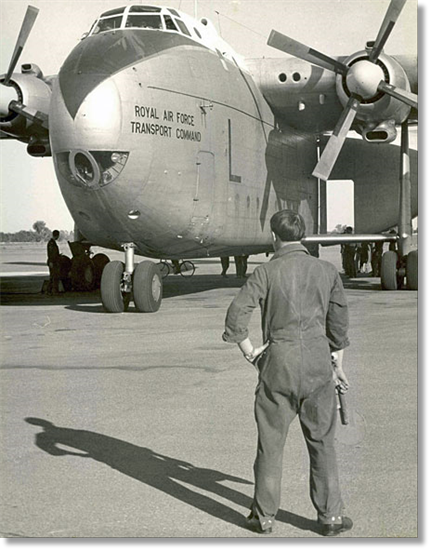
I came back down after ten minutes or so and asked for something to eat. He pointed to an aircraft flask, which contained lukewarm water and said “make yourself some soup!” That was all I was offered.
This tale is not over yet. On landing at RAF Luqa in Malta, I identified myself to the DAMO asking when the next flight to Cyprus would be “Ah! a MAMS bloke, you won’t get away for several days as there is a backlog of passengers to go. So I want you to give us a hand with our aircraft turnarounds as we are short of staff.” I thought that the situation could not get any worse. I was skint, tired, fed up and very hungry. No one was at all interested in my plight.
Eventually I did get airborne for Cyprus, in an Andover aircraft. I was seated at the very rear of the aircraft by the ramp; amongst mail bags. It was freezing sat there. After a while I went forward to use the loo, as soon as I moved a couple of feet the warmth of the aircraft heating system hit me, much to my relief.
On landing I was met by our CO who told me to get back to the section first thing the next morning for another trip!
This tale is not over yet. On landing at RAF Luqa in Malta, I identified myself to the DAMO asking when the next flight to Cyprus would be “Ah! a MAMS bloke, you won’t get away for several days as there is a backlog of passengers to go. So I want you to give us a hand with our aircraft turnarounds as we are short of staff.” I thought that the situation could not get any worse. I was skint, tired, fed up and very hungry. No one was at all interested in my plight.
Eventually I did get airborne for Cyprus, in an Andover aircraft. I was seated at the very rear of the aircraft by the ramp; amongst mail bags. It was freezing sat there. After a while I went forward to use the loo, as soon as I moved a couple of feet the warmth of the aircraft heating system hit me, much to my relief.
On landing I was met by our CO who told me to get back to the section first thing the next morning for another trip!
From: Anonymous
Subject: Next newsletter
Hi Tony,
This was Exercise Overdale held at RAF Geilenkirchen in 1967 some weeks before it was due to be handed back to the Luftwaffe. The Station Commander had the station in pristine condition and there were signs everywhere saying "Out of Bounds to Exercise Overdale Personnel". He was very upset at the start of the exercise when a UKMAMS member repositioned one of these signs outside the Station church in protest.
Subject: Next newsletter
Hi Tony,
This was Exercise Overdale held at RAF Geilenkirchen in 1967 some weeks before it was due to be handed back to the Luftwaffe. The Station Commander had the station in pristine condition and there were signs everywhere saying "Out of Bounds to Exercise Overdale Personnel". He was very upset at the start of the exercise when a UKMAMS member repositioned one of these signs outside the Station church in protest.

All exercise personnel were in tents and were fed in a marque as the Officers Mess was, you guessed, out of bounds as well. Our two teams were on the late shift and we had missed the evening meal as we had been asleep and the there was no food to be had. We had 5 Argosies due in at midnight but these were cancelled due to the heavy fog over the airfield so the teams were stood down. Myself and my best friend retired to the bar in the tent and proceeded to get rather wasted as, having no food, alcohol on an empty stomach had a profound effect.
Next morning, Bill Jacobs was apoplectic as there was a full scale investigation by the CO as to whom had ruined his golf course and left large ruts across every green and UKMAMS were the prime suspects. However, with cherubic faces we declared our innocence but I don’t think that dear old Bill was convinced as he kept us under close observation for the rest of the exercise.
Regards,
Anonymous
p.s. Please be advised that this was not one of Dave Powell’s epic adventures!
Regards,
Anonymous
p.s. Please be advised that this was not one of Dave Powell’s epic adventures!
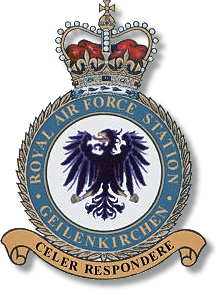
Retiring to our tent after the bar had been closed we managed to finish off a bottle of duty free but were still suffering hunger pangs. Along came mister inspiration. There was a large rabbit population on the airfield who came out to eat on the station golf course after dark.
I would sit on the bonnet of the Landrover and we would drive onto the golf course where my friend would transfix the rabbits in the glare of the headlights and I would leap off and belt them over the head with a strainer and I was a dab hand at making rabbit stew. Needless to say, the rabbits fell over laughing and we came back empty handed after a fruitless hour driving over the airfield.
I would sit on the bonnet of the Landrover and we would drive onto the golf course where my friend would transfix the rabbits in the glare of the headlights and I would leap off and belt them over the head with a strainer and I was a dab hand at making rabbit stew. Needless to say, the rabbits fell over laughing and we came back empty handed after a fruitless hour driving over the airfield.
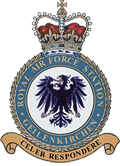
Deal to extend Hercules' life secures 1,200 UK engineering jobs
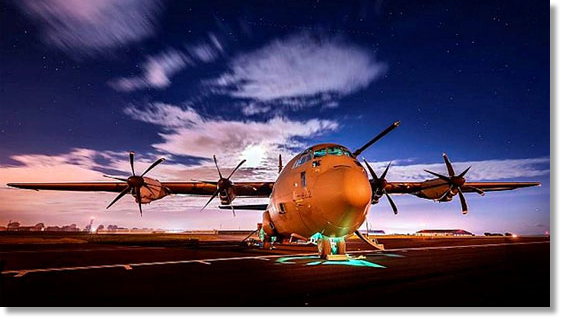
A major contract to maintain the Royal Air Force’s fleet of US-made Hercules aircraft has been awarded to British companies, safeguarding 1,200 UK jobs. The bulk of the £369m deal to extend the life of the four-engine transport aeroplanes until 2030 will go to Cambridge-based Marshall Aerospace and Defence Group. Under the terms of the six-year contract, about 1,100 jobs around Cambridge servicing the C-130J aircraft, which carry troops and cargo, will be protected.
A further 100 jobs at Rolls-Royce, which will maintain the aircrafts’ engines, and at the UK arm of Lockheed Martin, which will manage the supply chain of parts needed, will also be safeguarded.
Defence Secretary Michael Fallon said: “This contract is further evidence of what the growing defence budget, with £178bn investment in equipment, means for the UK. It will ensure our essential RAF transport aircraft are prepared for operations for years to come.”
A further 100 jobs at Rolls-Royce, which will maintain the aircrafts’ engines, and at the UK arm of Lockheed Martin, which will manage the supply chain of parts needed, will also be safeguarded.
Defence Secretary Michael Fallon said: “This contract is further evidence of what the growing defence budget, with £178bn investment in equipment, means for the UK. It will ensure our essential RAF transport aircraft are prepared for operations for years to come.”
The Hercules had been set for retirement in 2022 but last month’s strategic defence and security review (SDSR) revealed they would be given a new lease of life as part of the plan to “recapitalise” the RAF’s air transport fleet to enable UK forces to “intervene globally at speed”. The RAF currently operates a fleet of 24 Hercules aircraft. Under the new contract, by 2025 there will be 14 of the aircraft in service, with the other 10 being decommissioned in 2016 and 2017.
The current J-model Hercules - which entered service with the RAF 15 years ago - has seen action around the world, due to their ability to carry 100 troops or 20 tonnes of cargo up to 2,000 miles. As the role of the Armed Forces has widened, they have also been involved in humanitarian work, most recently in Iraq, Nepal and South Sudan.
It is understood that Special Forces units campaigned for the Hercules to remain in service, preferring the aircraft to the larger Airbus A400M, which is starting to enter service with the RAF. The Hercules is thought to be more capable of operating undetected behind enemy lines, and its smaller size makes it easier to land on rough surfaces than the A400M.
Adrian Baguley, director of defence equipment and support at the MoD’s procurement and support organisation, said: “This new deal for UK C130J Hercules support builds upon improved performance at a lower cost that will deliver strategic and tactical air transport capability and excellent value for UK defence.”
Daily Telegraph
The current J-model Hercules - which entered service with the RAF 15 years ago - has seen action around the world, due to their ability to carry 100 troops or 20 tonnes of cargo up to 2,000 miles. As the role of the Armed Forces has widened, they have also been involved in humanitarian work, most recently in Iraq, Nepal and South Sudan.
It is understood that Special Forces units campaigned for the Hercules to remain in service, preferring the aircraft to the larger Airbus A400M, which is starting to enter service with the RAF. The Hercules is thought to be more capable of operating undetected behind enemy lines, and its smaller size makes it easier to land on rough surfaces than the A400M.
Adrian Baguley, director of defence equipment and support at the MoD’s procurement and support organisation, said: “This new deal for UK C130J Hercules support builds upon improved performance at a lower cost that will deliver strategic and tactical air transport capability and excellent value for UK defence.”
Daily Telegraph
Land Rover Defender production to end
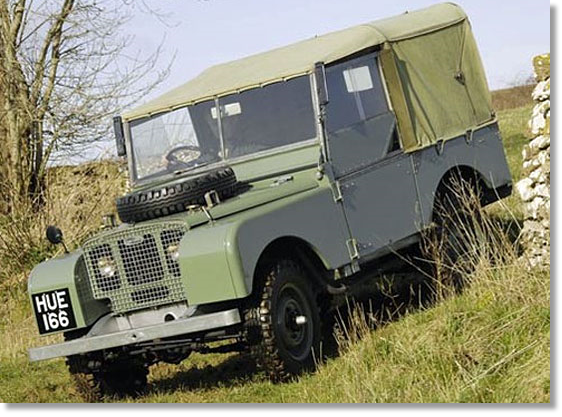
Jim Holder, editorial director of magazines Autocar and What Car?, said Defenders “appeal to every level of society”. He told the Press Association: “It’s a classless vehicle. Anyone can drive it. You might be a farmer trying to get over the muddiest field or it might be the Queen driving around Windsor. Neither would surprise you if you saw it. It’s got that ubiquity where it can be at home in Chelsea but doesn’t look out of place painted white in the middle of a war zone. “It claims to do everything and to a degree it can do everything.”
Mr Holder believes JLR made the decision to cease production of Defenders because “regulations have finally caught up with it”. He said: “They haven’t been able to update crash safety or the engine emissions quick enough. “The world has overtaken it to a point where they can no longer keep on the right side of emissions and safety laws.”
JLR is working on a replacement vehicle for the Defender, but Mr Holder claimed it will be a “massive challenge” to match the status of the original. “It’s a charming vehicle. It’s a go-anywhere, rugged symbol of solid construction,” he said. “But the truth is the Defender today doesn’t sell in high enough numbers. The challenge is how to broaden its appeal without ruining the key aspects that make it so appealing.”
Land Rover holds a royal warrant, as supplier to the royal household. The royal relationship with Land Rover goes back to 1948 when King George VI viewed the original Land Rover. The Queen, who has been pictured at the wheel of Land Rovers, took delivery of her first one shortly after coming to the throne in 1952 and has used Land Rovers ever since.
A JLR spokesman said the company will hold a small event for workers at the Solihull plant on Friday to mark the end of Defender production.
Western Morning News
Land Rover holds a royal warrant, as supplier to the royal household. The royal relationship with Land Rover goes back to 1948 when King George VI viewed the original Land Rover. The Queen, who has been pictured at the wheel of Land Rovers, took delivery of her first one shortly after coming to the throne in 1952 and has used Land Rovers ever since.
A JLR spokesman said the company will hold a small event for workers at the Solihull plant on Friday to mark the end of Defender production.
Western Morning News
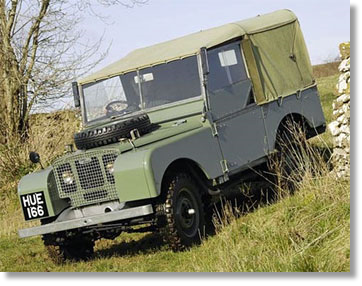
One of the most-loved and long-lived road vehicles, and a favourite with the Queen, will cease production on Friday. The last Land Rover Defender will be produced by Jaguar Land Rover (JLR) at Solihull in the West Midlands. The popular 4x4 vehicle, which is exported all around the world, represents the continuation of the very first Land Rover which came on to the scene in April 1948 and was modelled on the war-time jeeps.
From: Phil Smith, Exmouth, Devon
Subject: Is your Local famous? Mine is!
Hi Tony,
I thought the Old Bods might be interested in the news regarding my local here in Exmouth, seeing as how booze is involved as it were. The latest Brad Pitt Hollywood Blockbuster, The Big Short, features The Powder Monkey here in Exmouth.
Nobody as yet has seen Brad Pitt but we are expecting lots and lots of American tourists in the very near future to take lots and lots of pictures.
The last big thing to hit this place was when the household waste collection went from weekly to fortnightly! The town is buzzing!
Regards,
Phil
Subject: Is your Local famous? Mine is!
Hi Tony,
I thought the Old Bods might be interested in the news regarding my local here in Exmouth, seeing as how booze is involved as it were. The latest Brad Pitt Hollywood Blockbuster, The Big Short, features The Powder Monkey here in Exmouth.
Nobody as yet has seen Brad Pitt but we are expecting lots and lots of American tourists in the very near future to take lots and lots of pictures.
The last big thing to hit this place was when the household waste collection went from weekly to fortnightly! The town is buzzing!
Regards,
Phil
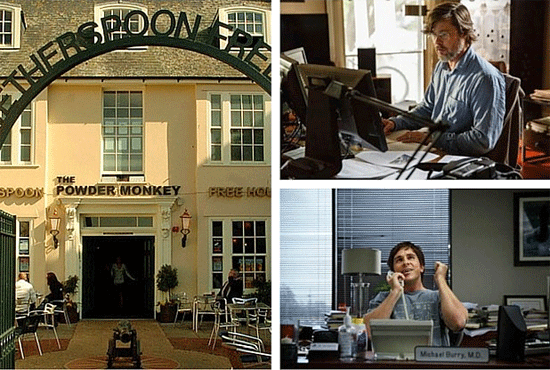
10 Things You Need To Know About Australia's Military

1. Although the British first settled Down Under in 1788, it wasn't until 1901, when six colonies united to form the Commonwealth of Australia, that its military was formed.
2. Similar to the British Armed Forces, the country's navy and air force are preceded by the title 'Royal', while the army is not. King George V granted both titles.
3. To this day Royal Australian Navy uniforms are very similar in cut, colour and insignia to their British Royal Navy forerunners.
4. While the Australian Army, Royal Australian Air Force (RAAF) and Royal Australian Navy (RAN) were all formed in the early 20th century, it wasn't until 1976 that they were unified into the Australian Defence Force (ADF).
5. The Australian warships and clearance diving team sent to the 1991 Gulf War were the first Australian personnel deployed to an active war zone since the ADF's establishment.
6. The last Australian First World War veteran, John Campbell Ross, died in 2009 at the age of 110. He had served as a wireless operator in the Australian Army. He celebrated his 110th birthday with chocolates, cake and a commemorative letter from the then Prime Minister of Australia, Kevin Rudd.
7. Our favourite ever Australian military exercise name? Exercise Kangaroo '89.
8. The RAAF's fastest plane? The F-35A. It has two in service currently, with 70 on order. Top speed Mach 1.6+ (1,200 mph, 1,930 km/h).
9. The first Aboriginal Australian to be commissioned as an officer in the Australian army was Reg Saunders in 1944. A well-respected soldier and leader, he died on 2 March 1990.
10. Prince Harry's last posting during his Army career was a month-long secondment to the ADF. During his time there he trained with the country's Special Air Service Regiment (SASR), participating in their selection course, including a fitness test and a physical training session with selection candidates.
Forces TV
2. Similar to the British Armed Forces, the country's navy and air force are preceded by the title 'Royal', while the army is not. King George V granted both titles.
3. To this day Royal Australian Navy uniforms are very similar in cut, colour and insignia to their British Royal Navy forerunners.
4. While the Australian Army, Royal Australian Air Force (RAAF) and Royal Australian Navy (RAN) were all formed in the early 20th century, it wasn't until 1976 that they were unified into the Australian Defence Force (ADF).
5. The Australian warships and clearance diving team sent to the 1991 Gulf War were the first Australian personnel deployed to an active war zone since the ADF's establishment.
6. The last Australian First World War veteran, John Campbell Ross, died in 2009 at the age of 110. He had served as a wireless operator in the Australian Army. He celebrated his 110th birthday with chocolates, cake and a commemorative letter from the then Prime Minister of Australia, Kevin Rudd.
7. Our favourite ever Australian military exercise name? Exercise Kangaroo '89.
8. The RAAF's fastest plane? The F-35A. It has two in service currently, with 70 on order. Top speed Mach 1.6+ (1,200 mph, 1,930 km/h).
9. The first Aboriginal Australian to be commissioned as an officer in the Australian army was Reg Saunders in 1944. A well-respected soldier and leader, he died on 2 March 1990.
10. Prince Harry's last posting during his Army career was a month-long secondment to the ADF. During his time there he trained with the country's Special Air Service Regiment (SASR), participating in their selection course, including a fitness test and a physical training session with selection candidates.
Forces TV

From: Fred Hebb, Gold River, NS
Subject: First In, Last Out
Hi Tony,
In 1985 I was posted from US Air Force Europe HQ in Ramstein Germany to Canadian Forces Europe HQ in Lahr. Having not been exposed to much to do with the Army, other than a couple of leadership courses, their passing through AMU or carrying them around on the aircraft when I was a Loadmaster, I was on a learning curve.
I worked with a great guy, Captain Norm Hewitt, who asked me to make arrangements to go to Norway on an exercise to redeploy troops and equipment back to Canada via land, sea and air. So, being a good airman, I called Base Traffic and booked flights by SAS to Oslo, and then off to Bardufoss. I then called the Embassy in Oslo and had them make reservations for us in an hotel in Oslo and at the seaport in Sørreisa.
The day before we departed, Capt Hewitt asked me where the sleeping bags and camping gear was; I told him we didn't have any. The expression on his face was priceless when I told him we were staying in hotels. He wasn't sure how that was going to go over in Norway but said, "What the heck, we'll give it a shot!"
After arriving in Bardufoss, we were summoned to a tent to attend an army "O Group" where we were filled in on all of the upcoming happenings. It was all good until the Colonel informed Capt Hewitt that they had arranged for a tent for him and one for me somewhere down in the woods. The Captain advised him it would not be required as we had hotel reservations and all we needed was a Jeep. I think the Colonel was a bit surprised but we got the Jeep and moved to the hotel only after the Colonel had a one-on-one conversation with the Captain.
We were at the airport to wave goodbye to all the troops, loaded the ships and said goodbye to those who sailed with the vehicles back to Canada. We returned to the hotel awaiting our own flight back to Germany. In those times alcohol was very abundant on commercial aircraft and we took advantage of it for sure!
Life was good.
Fred Hebb
Subject: First In, Last Out
Hi Tony,
In 1985 I was posted from US Air Force Europe HQ in Ramstein Germany to Canadian Forces Europe HQ in Lahr. Having not been exposed to much to do with the Army, other than a couple of leadership courses, their passing through AMU or carrying them around on the aircraft when I was a Loadmaster, I was on a learning curve.
I worked with a great guy, Captain Norm Hewitt, who asked me to make arrangements to go to Norway on an exercise to redeploy troops and equipment back to Canada via land, sea and air. So, being a good airman, I called Base Traffic and booked flights by SAS to Oslo, and then off to Bardufoss. I then called the Embassy in Oslo and had them make reservations for us in an hotel in Oslo and at the seaport in Sørreisa.
The day before we departed, Capt Hewitt asked me where the sleeping bags and camping gear was; I told him we didn't have any. The expression on his face was priceless when I told him we were staying in hotels. He wasn't sure how that was going to go over in Norway but said, "What the heck, we'll give it a shot!"
After arriving in Bardufoss, we were summoned to a tent to attend an army "O Group" where we were filled in on all of the upcoming happenings. It was all good until the Colonel informed Capt Hewitt that they had arranged for a tent for him and one for me somewhere down in the woods. The Captain advised him it would not be required as we had hotel reservations and all we needed was a Jeep. I think the Colonel was a bit surprised but we got the Jeep and moved to the hotel only after the Colonel had a one-on-one conversation with the Captain.
We were at the airport to wave goodbye to all the troops, loaded the ships and said goodbye to those who sailed with the vehicles back to Canada. We returned to the hotel awaiting our own flight back to Germany. In those times alcohol was very abundant on commercial aircraft and we took advantage of it for sure!
Life was good.
Fred Hebb
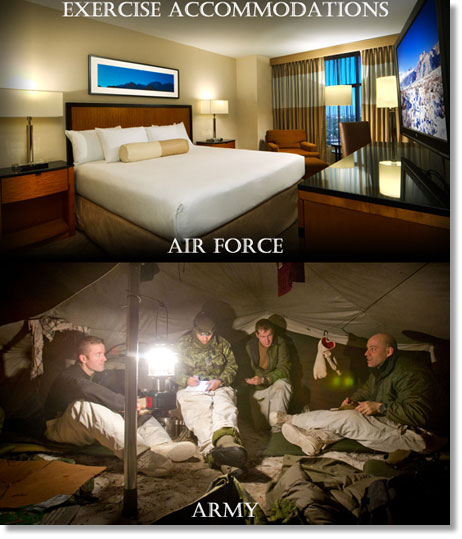
Eight RAF jets 'sold to Middle Eastern country' arrive in Malta
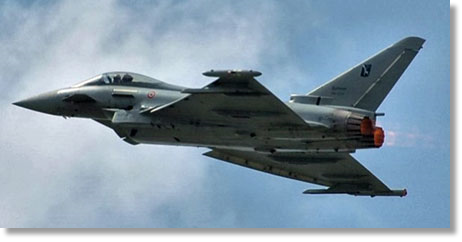
Eight Royal Air Force Eurofighter Typhoons and two RAF tanker aircraft arrived in Malta earlier this week on a technical stopover en route to the Middle East.
Carmel Vassallo, chief executive of Malta Air Traffic Services, told MaltaToday that the planes had passed over Malta after the United Kingdom had sold them to a “Middle Eastern country”. Although he couldn’t specify the country, flight tracking data shows that one of the tankers landed in the Omani capital of Salalah nine hours after taking off from Luqa on Wednesday, before jetting off to an as-yet unknown location earlier this morning.
Before leaving the island, the fighter jets were seen performing a low pass to salute Malta’s technicians.
Carmel Vassallo, chief executive of Malta Air Traffic Services, told MaltaToday that the planes had passed over Malta after the United Kingdom had sold them to a “Middle Eastern country”. Although he couldn’t specify the country, flight tracking data shows that one of the tankers landed in the Omani capital of Salalah nine hours after taking off from Luqa on Wednesday, before jetting off to an as-yet unknown location earlier this morning.
Before leaving the island, the fighter jets were seen performing a low pass to salute Malta’s technicians.
MaltaToday.com.mt
From: Len Bowen, Chisholm. ACT
Subject: RE: The next OBA Newsletter - First In, Last Out
G'day Tony,
Firstly, a sad note. Presumably you will already have heard of the passing of Graeme 'Crumbles' Crombie, who died last week after a long battle with Motor Neuron Disease.
Crumbles was one of the stalwarts of the RAAF Movements Mafia and will be well remembered by many 'Movers' in the 1980s as the MOVCOORD-C King-Pin of all MATU deployments, especially when two or more Teams were on the same Task.
Subject: RE: The next OBA Newsletter - First In, Last Out
G'day Tony,
Firstly, a sad note. Presumably you will already have heard of the passing of Graeme 'Crumbles' Crombie, who died last week after a long battle with Motor Neuron Disease.
Crumbles was one of the stalwarts of the RAAF Movements Mafia and will be well remembered by many 'Movers' in the 1980s as the MOVCOORD-C King-Pin of all MATU deployments, especially when two or more Teams were on the same Task.
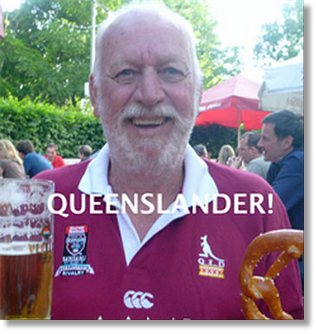
'First In - Last Out'
Many times and many places, but probably the most immediately memorable was my FEAF MAMS's 'last out' from RAF Gong Kedak, Terengganu State, North East Malaysia. The closure of RAF Kuantan in August 1966 has already been recorded in these pages, and September the same year saw my Team let loose for the first time with myself as Team Leader, going solo with the closure of Gong Kedak. A lot easier than Kuantan, especially as we didn't have to back-load hundreds of bombs from the bomb dump.
Once again there was a British Army LST involved, to carry the vehicles and heavy gear, and my Team was scheduled to redeploy to Singapore on her after we'd closed up the base. Fortunately Flight Sergeant Ted went down to the beach to have a look at the vessel, and check out the accommodation on board for the homeward voyage. He found that I was going to be well looked after, as there was a (small) cabin for me in the Officers' Quarters, and that he and my Sergeant were also fairly well catered for with bunks in the 'Senior Sailors' area, had it been a Royal Navy ship. The rest of the Team ORs however were expected to sleep either on deck or down below in the Tank Bay with the Lascar crew. As the sailing time to Singapore was at least four days, and it was NE Monsoon period, this was just not acceptable, and we decided to redeploy by road, as usual having our own SWB Land Rover and Trailer with us on task.
The problem was rations, as while we had the usual emergency stash of a few one man/24 hour ration packs, we didn't have enough tucker for what would be at least three days on the road, and no way of drawing travel allowances. This problem was solved when a couple of the last out-going RAF Gong Kedak residents proposed that they took the LSH south, exchanging our 'steerage' passage accommodation on board for several 10 man/24 hour rat packs, a dozen or so fresh steaks, a sack of spuds ... and two cases of Tiger beer! This was a satisfactory solution all round, so we waved the LSH off from the beach in the late afternoon and returned to the base - to find that in our absence all of the few remaining semi-permanent buildings had been locked up, and the keys were winging their way south in the pocket of the (former) Station Adj on the last Beverley off the airfield.
Many times and many places, but probably the most immediately memorable was my FEAF MAMS's 'last out' from RAF Gong Kedak, Terengganu State, North East Malaysia. The closure of RAF Kuantan in August 1966 has already been recorded in these pages, and September the same year saw my Team let loose for the first time with myself as Team Leader, going solo with the closure of Gong Kedak. A lot easier than Kuantan, especially as we didn't have to back-load hundreds of bombs from the bomb dump.
Once again there was a British Army LST involved, to carry the vehicles and heavy gear, and my Team was scheduled to redeploy to Singapore on her after we'd closed up the base. Fortunately Flight Sergeant Ted went down to the beach to have a look at the vessel, and check out the accommodation on board for the homeward voyage. He found that I was going to be well looked after, as there was a (small) cabin for me in the Officers' Quarters, and that he and my Sergeant were also fairly well catered for with bunks in the 'Senior Sailors' area, had it been a Royal Navy ship. The rest of the Team ORs however were expected to sleep either on deck or down below in the Tank Bay with the Lascar crew. As the sailing time to Singapore was at least four days, and it was NE Monsoon period, this was just not acceptable, and we decided to redeploy by road, as usual having our own SWB Land Rover and Trailer with us on task.
The problem was rations, as while we had the usual emergency stash of a few one man/24 hour ration packs, we didn't have enough tucker for what would be at least three days on the road, and no way of drawing travel allowances. This problem was solved when a couple of the last out-going RAF Gong Kedak residents proposed that they took the LSH south, exchanging our 'steerage' passage accommodation on board for several 10 man/24 hour rat packs, a dozen or so fresh steaks, a sack of spuds ... and two cases of Tiger beer! This was a satisfactory solution all round, so we waved the LSH off from the beach in the late afternoon and returned to the base - to find that in our absence all of the few remaining semi-permanent buildings had been locked up, and the keys were winging their way south in the pocket of the (former) Station Adj on the last Beverley off the airfield.
The sole remaining occupant of the base was an elderly Indian watchman who had set up shop in the old Guardroom, and while he was happy for us to stay on the base, could not help with access to the buildings. OK, no prob. We'll set up our camp beds and mossie nets on the wide veranda of the old station HQ building, which would give us shelter from the anticipated over-night rain. There was plenty of scrap timber around, so we quickly had a fire going, the spuds in foil in the ashes, the steaks grilling on a man-hole cover we 'liberated' (and washed - a bit) and most importantly the Tiger on ice in the cool bin in the back of the Land Rover.
As the sun went down and the Tiger brew worked its magic on tired team members, discussion turned to the name of the Malaysian State - Terengganu. I was sure that I remembered the name from somewhere, and after about the fourth can it came back to me; a book from my youth 'The Tigers of Terengganau' by Colonel Jim Corbett, about hunting - and dispatching - man eating tigers in this area. Jokes all round; "No tigers here now!". "More sense than to still be here after twenty years of aircraft noise" and so on. Nevertheless, before we all climbed int our pits, we banked the fire up and made sure that we were all well to the back of the veranda ... and yes, sure enough in the early hours of the morning we did awaken to hear something moving through the deserted camp area, and also hear several growls and coughs. No; can't possibly be! Fertile imagination after too many Tiger brews on tired bodies! Roll over and go back to sleep.
Dawn broke and, as we cooked breakfast, the old Indian watchman came over: "Good morning Sah. Are you having had a good night?"
"Yes, thanks, yourself?"
"Oh no, not really; that damned tiger kept me awake".
"WHAT tiger?"
"Oh the old fellow who always comes round outside the wire most nights. I think he got in through the back gate this time. I've found a footprint. Come see"
As the sun went down and the Tiger brew worked its magic on tired team members, discussion turned to the name of the Malaysian State - Terengganu. I was sure that I remembered the name from somewhere, and after about the fourth can it came back to me; a book from my youth 'The Tigers of Terengganau' by Colonel Jim Corbett, about hunting - and dispatching - man eating tigers in this area. Jokes all round; "No tigers here now!". "More sense than to still be here after twenty years of aircraft noise" and so on. Nevertheless, before we all climbed int our pits, we banked the fire up and made sure that we were all well to the back of the veranda ... and yes, sure enough in the early hours of the morning we did awaken to hear something moving through the deserted camp area, and also hear several growls and coughs. No; can't possibly be! Fertile imagination after too many Tiger brews on tired bodies! Roll over and go back to sleep.
Dawn broke and, as we cooked breakfast, the old Indian watchman came over: "Good morning Sah. Are you having had a good night?"
"Yes, thanks, yourself?"
"Oh no, not really; that damned tiger kept me awake".
"WHAT tiger?"
"Oh the old fellow who always comes round outside the wire most nights. I think he got in through the back gate this time. I've found a footprint. Come see"
Yes, there were a couple of clear pug marks in the fresh mud in the former tented camp but well away from where we were sleeping. We ascertained from the old bloke that it was well known that there were still a few tigers in the area, and they would sometimes sniff round the camp perimeter looking for scraps.
Accordingly, as soon as it got dark he had locked himself in the guardroom with the only .303 rifle left on the base, and left us to it!
We quickly packed our kit, loaded the Land Rover and got on the road. After all, we had to get as far as Kuantan that day, where we could set up camp on a beach with no tigers - and an appointment at 'Mimi's Red Light All Night' establishment to get the kinks out of the muscles after an 8 hours drive in a SWB Land Rover - but that's another story.
My Teams and I have subsequently been first in and last out in many places and at many time since - but never subsequently with visitations by the local wildlife!
Accordingly, as soon as it got dark he had locked himself in the guardroom with the only .303 rifle left on the base, and left us to it!
We quickly packed our kit, loaded the Land Rover and got on the road. After all, we had to get as far as Kuantan that day, where we could set up camp on a beach with no tigers - and an appointment at 'Mimi's Red Light All Night' establishment to get the kinks out of the muscles after an 8 hours drive in a SWB Land Rover - but that's another story.
My Teams and I have subsequently been first in and last out in many places and at many time since - but never subsequently with visitations by the local wildlife!
I personally have many happy - if hazy - memories of Graeme on the OP DAMON redeployment from Zimbabwe in March 1980, with three Herc loads of Kiwi and Fijian troops, all with prodigious thirsts after six months 'up country'. Crumbles and MATU ALT1 tried valiantly to keep up with them in Jo'berg, Mauritius, Cocos and Pearce, and we were all just about wrecked when we finally got back to Richmond.
Vale, Crumbles, old friend. When the final fiery chariots come down from heaven to signal the Apocalypse, I know who will be there supervising their outbound loading!
Vale, Crumbles, old friend. When the final fiery chariots come down from heaven to signal the Apocalypse, I know who will be there supervising their outbound loading!
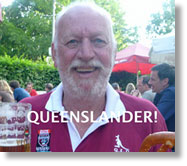

From: David Stevens, Bangor
Subject: First In, Last Out
Hi Tony,
On 25 March 1964 'E' team flew out of RAF Lyneham 10.06hrs (ATD). Our final destination was Kuching, Borneo. We were first in on 2 April and last out on 14 May.
The team comprised Plt Off Stevens, Sgt Mooney, Sgt Snell, Cpl Redman, SAC Gibson and SAC Yeoman. We were the first into Kuching as some sort of movement reinforcement for 99 Ghurkha Brigade HQ ; but I have no idea exactly what!
Our deployment/adventure was via El Adem, Khormaksar, Gan, Changi, Seletar, Don Muang (Bangkok), RAAF Ubon and thence back to the UK.
Anyway, the team was split up between the brigade HQ, Kuching City (Stevens and Redman), RAF Kuching Movements (Mooney and Yeoman), a remote outpost in Sabah (Gibson) and in Labuan (was there an RAF Labuan at that time?) [yes] (Snell). I will stand corrected if I have got the disposition of the team wrong, it was a long time ago!
The most notable anecdote is SAC Gibson's absolute indignation at having to write a report because, when on security duty one night, he saw a movement in the forest on the perimeter of the base and fired off a live round of ammunition. His most printable comment was "how did we ever win any wars if a soldier had a to write a report every time he/she fired a bullet?" Fair comment really.
Kind regards
David
Subject: First In, Last Out
Hi Tony,
On 25 March 1964 'E' team flew out of RAF Lyneham 10.06hrs (ATD). Our final destination was Kuching, Borneo. We were first in on 2 April and last out on 14 May.
The team comprised Plt Off Stevens, Sgt Mooney, Sgt Snell, Cpl Redman, SAC Gibson and SAC Yeoman. We were the first into Kuching as some sort of movement reinforcement for 99 Ghurkha Brigade HQ ; but I have no idea exactly what!
Our deployment/adventure was via El Adem, Khormaksar, Gan, Changi, Seletar, Don Muang (Bangkok), RAAF Ubon and thence back to the UK.
Anyway, the team was split up between the brigade HQ, Kuching City (Stevens and Redman), RAF Kuching Movements (Mooney and Yeoman), a remote outpost in Sabah (Gibson) and in Labuan (was there an RAF Labuan at that time?) [yes] (Snell). I will stand corrected if I have got the disposition of the team wrong, it was a long time ago!
The most notable anecdote is SAC Gibson's absolute indignation at having to write a report because, when on security duty one night, he saw a movement in the forest on the perimeter of the base and fired off a live round of ammunition. His most printable comment was "how did we ever win any wars if a soldier had a to write a report every time he/she fired a bullet?" Fair comment really.
Kind regards
David
From: Anthony Fowler, Gatwick, East Sussex
Subject: Mover on the Move
Hi Tony,
Subject: Mover on the Move
Hi Tony,
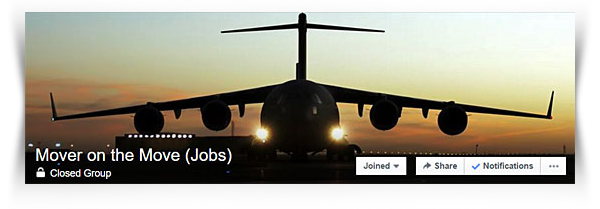
You will have seen lots of talk about a new Facebook page to promote jobs for ex movers called Mover on the Move (Jobs). The aim is simple to share opportunities, vacancies, tips on CVs, courses etc to support ex movers transition to civvie street or move about between jobs once out. Please feel free to add this to the next OBA newsletter.
Regards,
Tony
Regards,
Tony
That's it for this edition
Have a great weekend!
Best regards
Tony
ukmamsoba@gmail.com
Have a great weekend!
Best regards
Tony
ukmamsoba@gmail.com
That's it for this edition
Have a great weekend!
Best regards
Tony
ukmamsoba@gmail.com
Have a great weekend!
Best regards
Tony
ukmamsoba@gmail.com
